Contact Sheet:
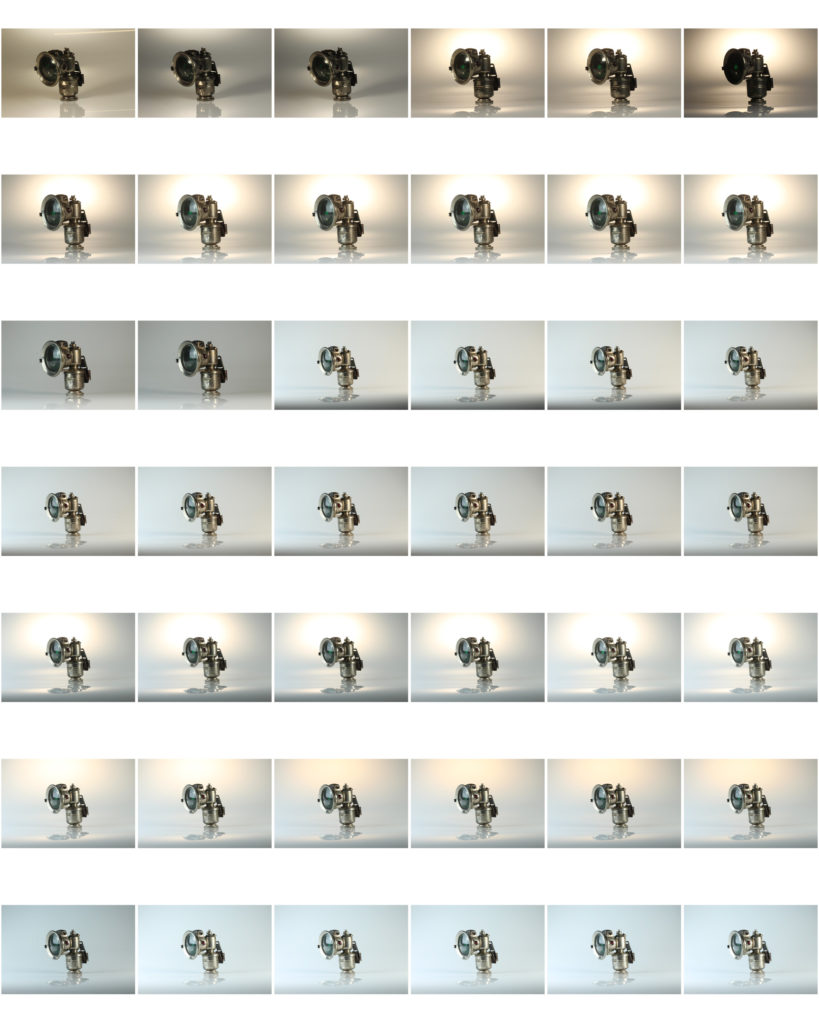
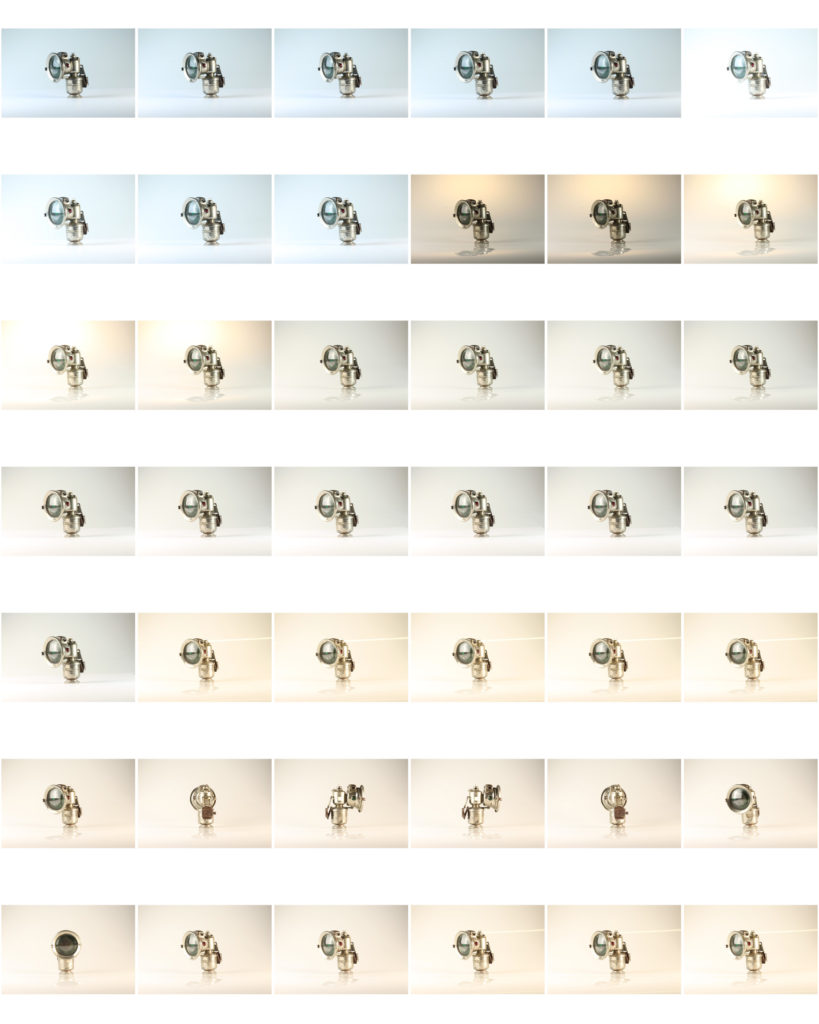
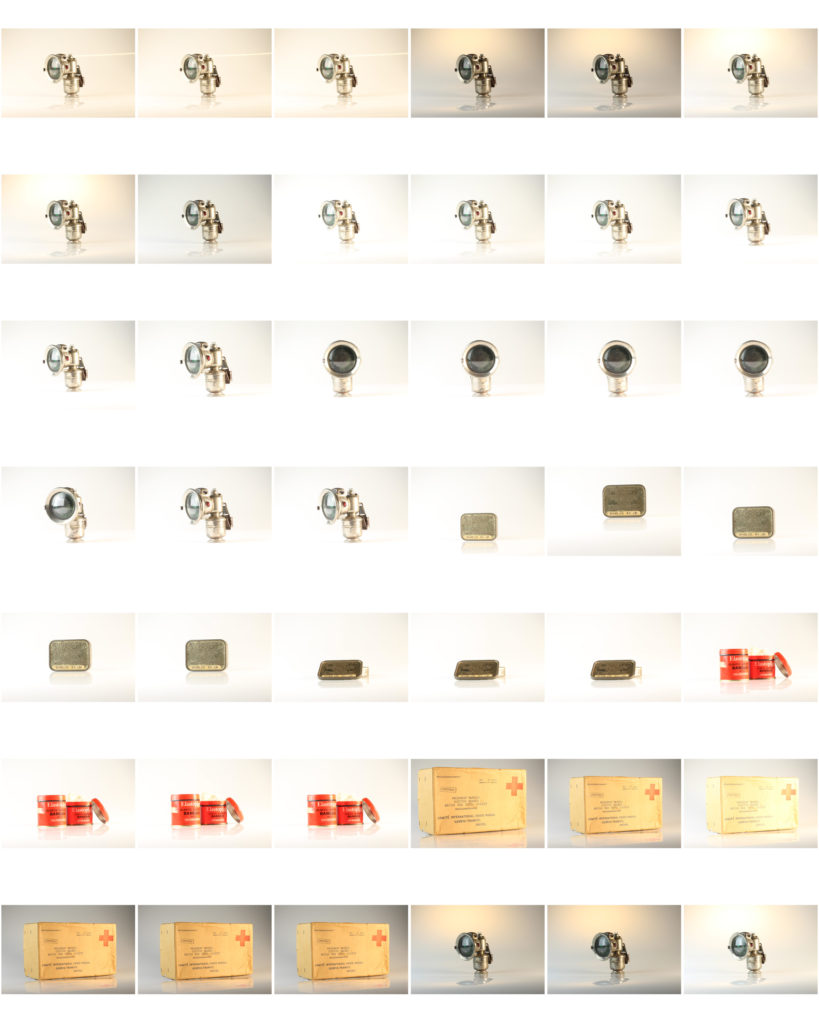



Contact Sheet:






In this photo shoot I plan on taking image of the occupation objects in a slightly more artistic way. I will be using very vividly colored background as this is what Rafal did in his work, and I like how it makes the objects he’s photographing stand out more. I also like how he used geometrical patterns in order to symbolise being being enclosed or trapped, so I will be using different geometrical shapes in order to do the same thing as it symbolises how Jersey people must have felt under the occupation. I want to create a strong sense of displacement through contrasting colours, and a feeling of being trapped through the use of geometrical shapes.
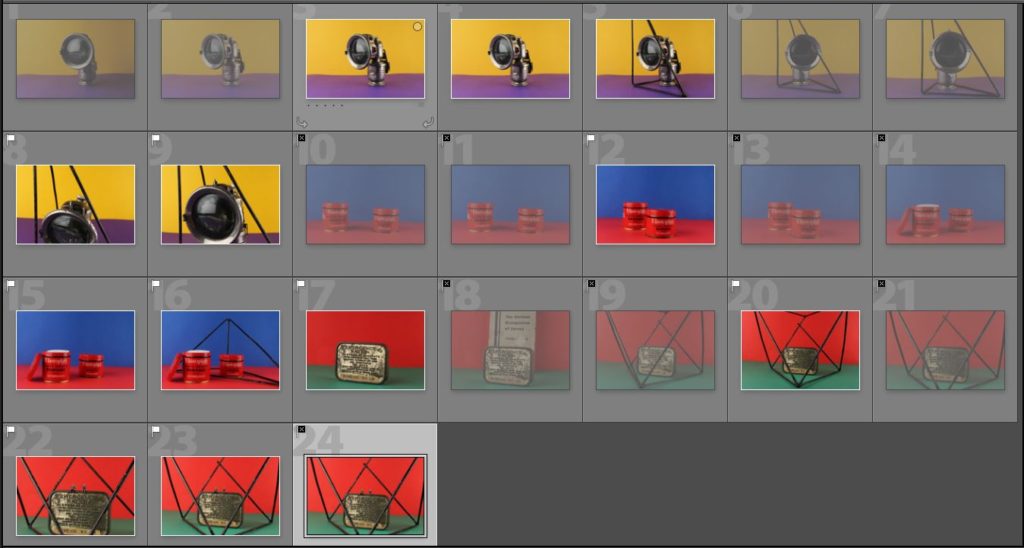
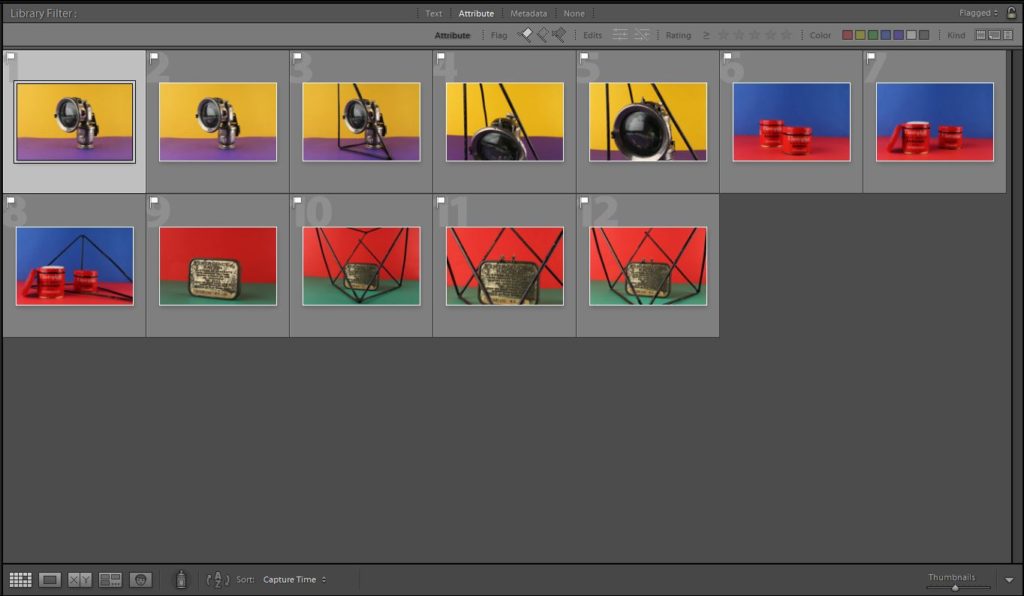
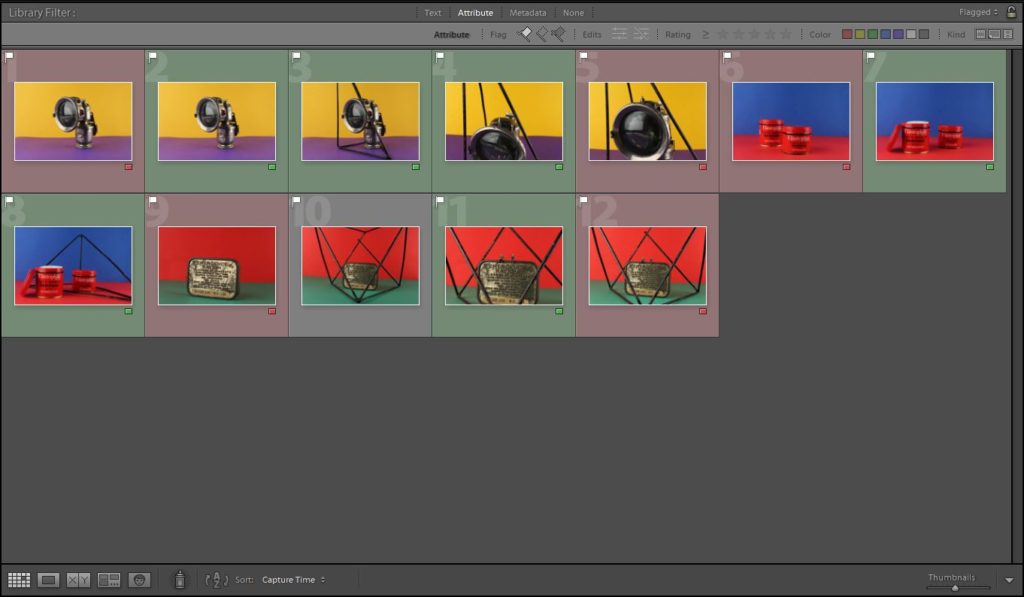
Best images


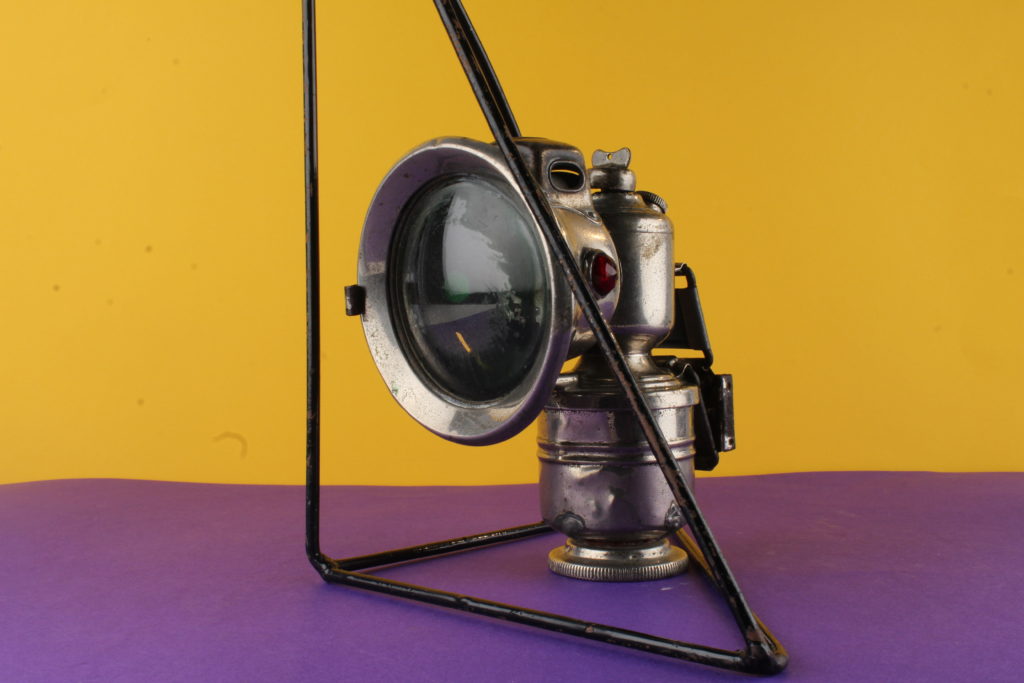


Further developing using archive images
1st montage:
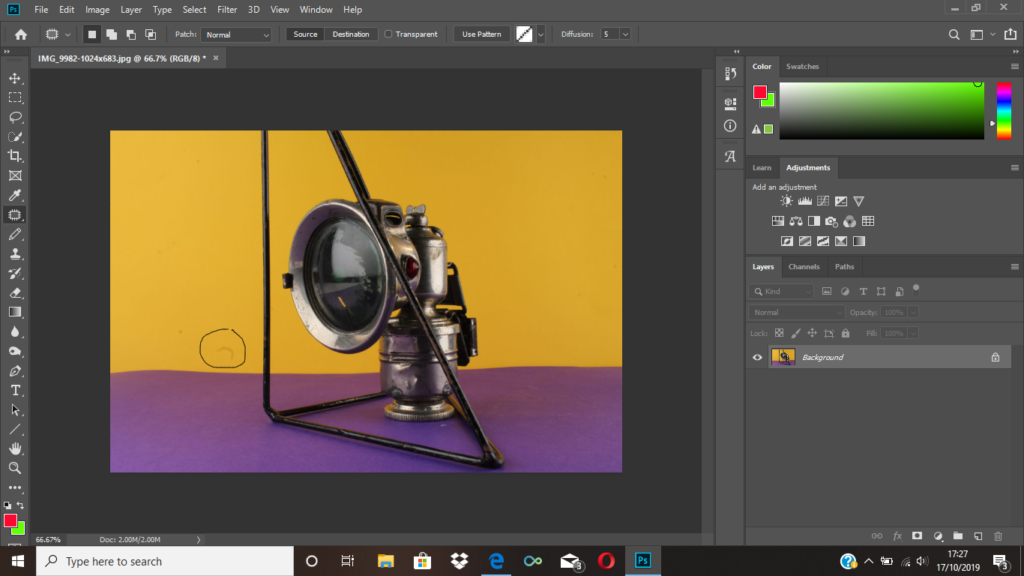
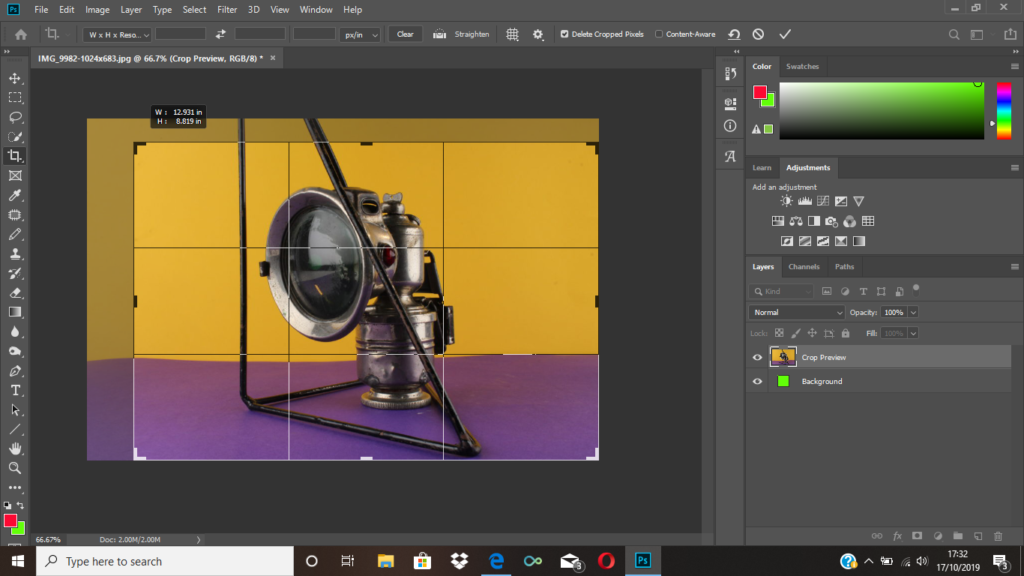
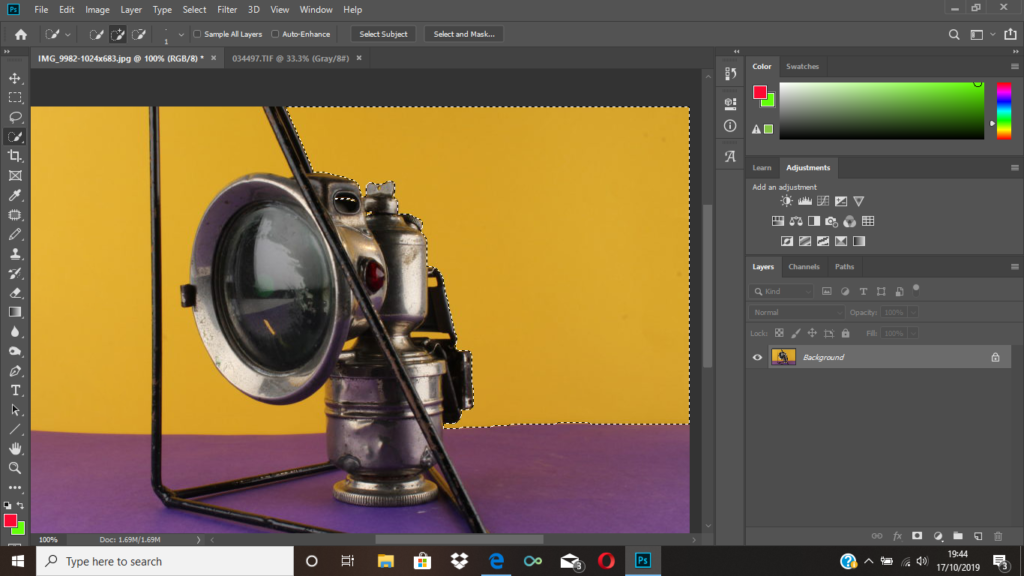

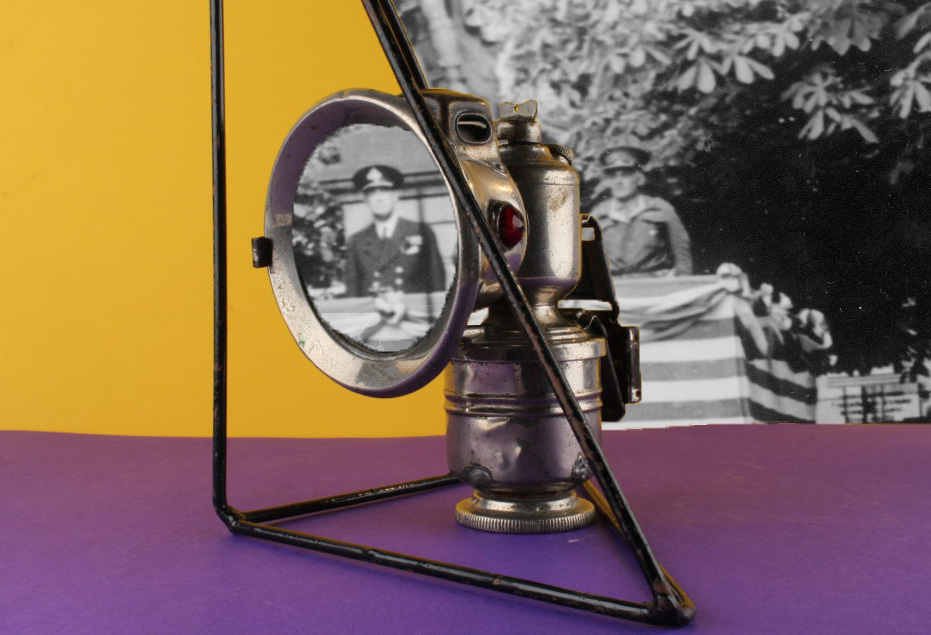
2nd montage:
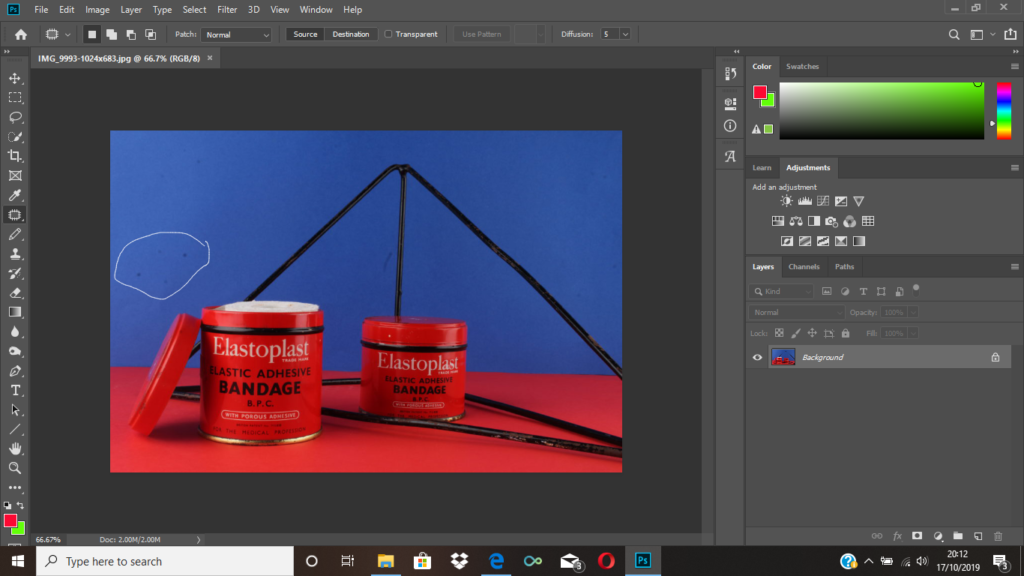
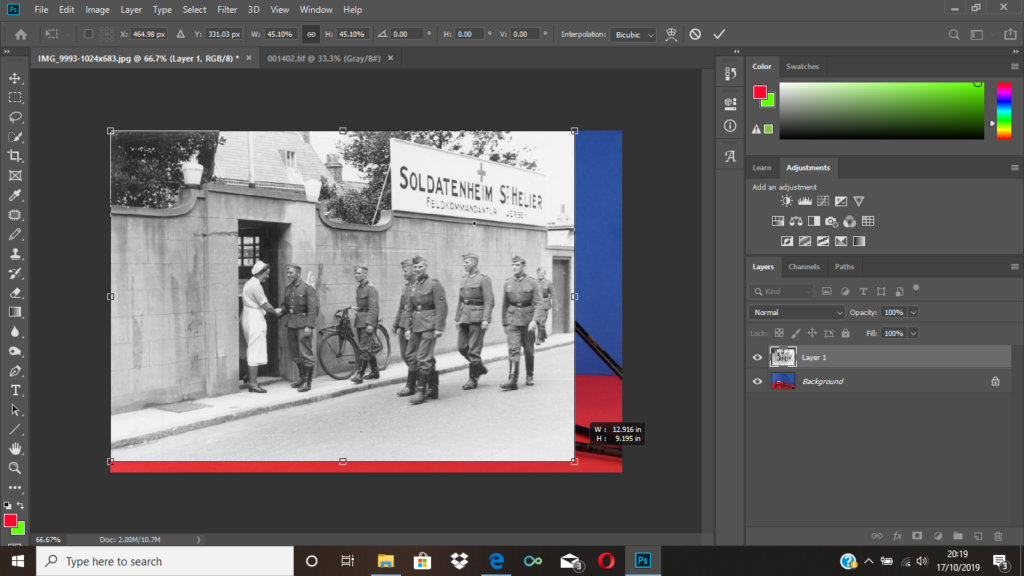
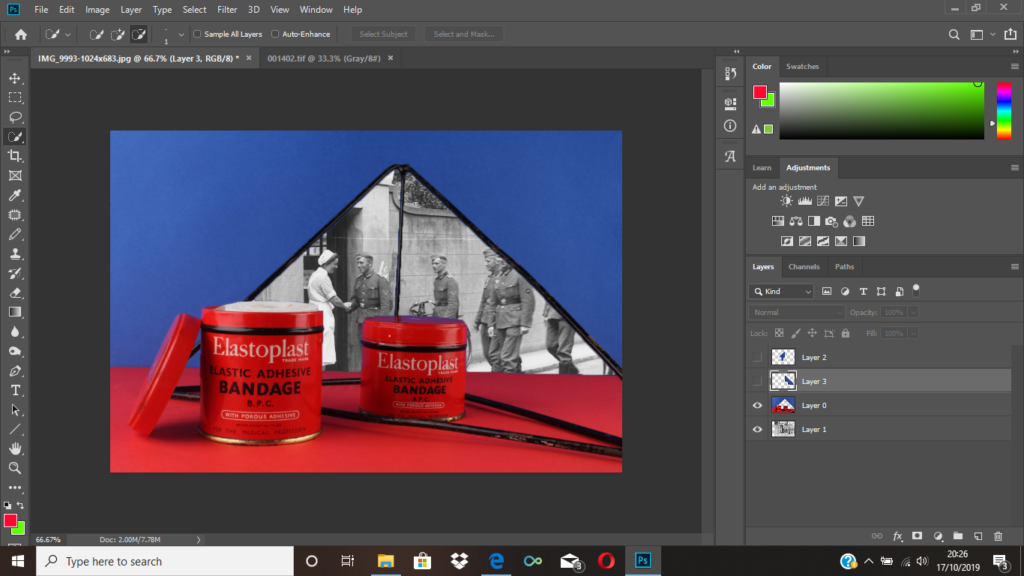
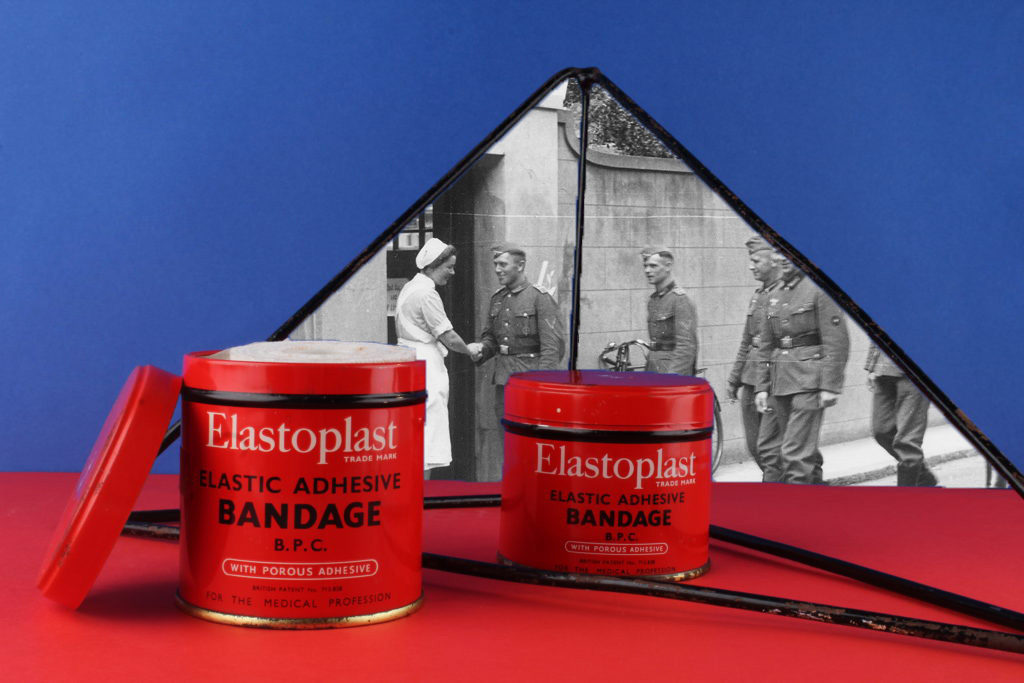
3rd montage:



4th montage:
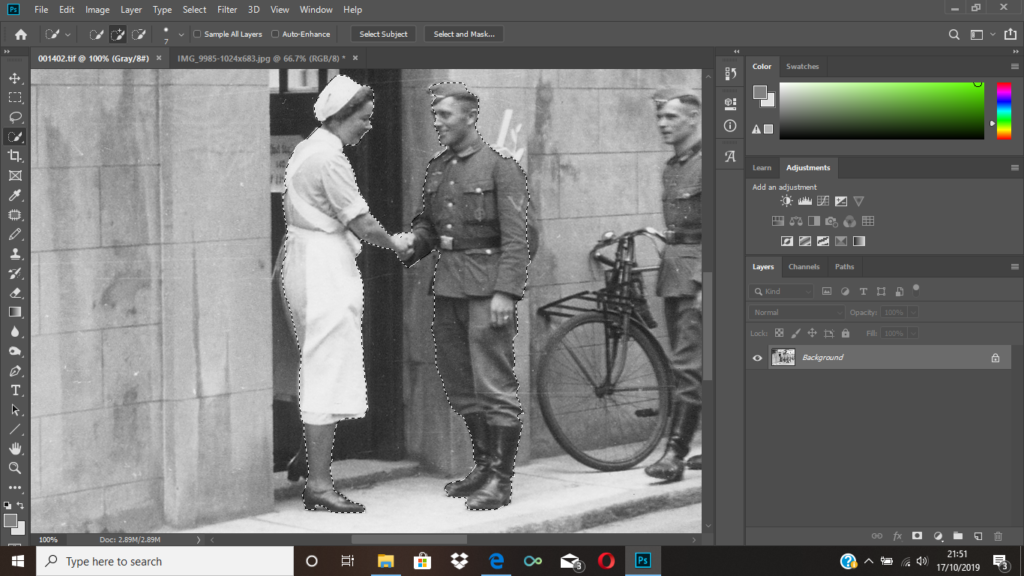
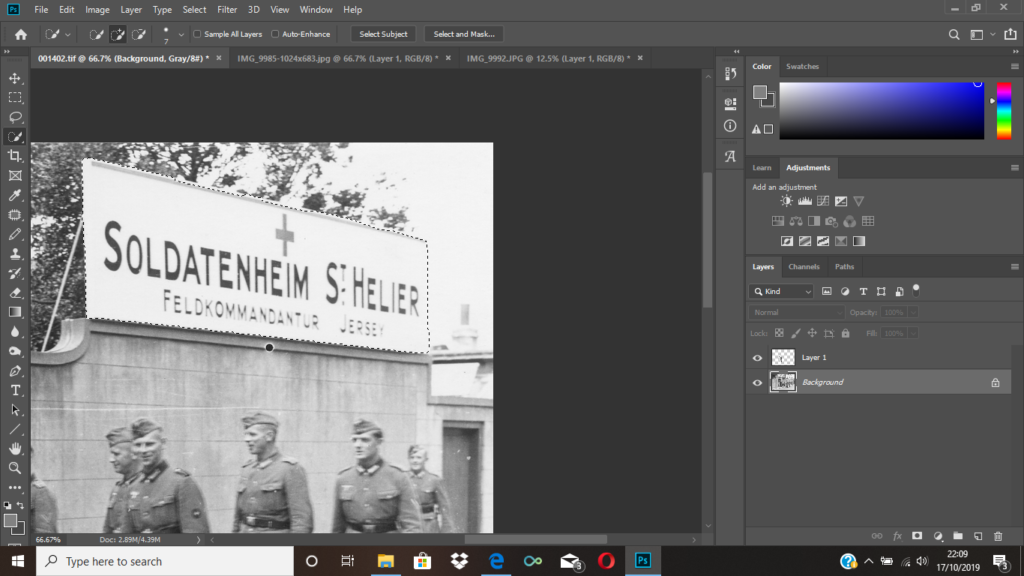
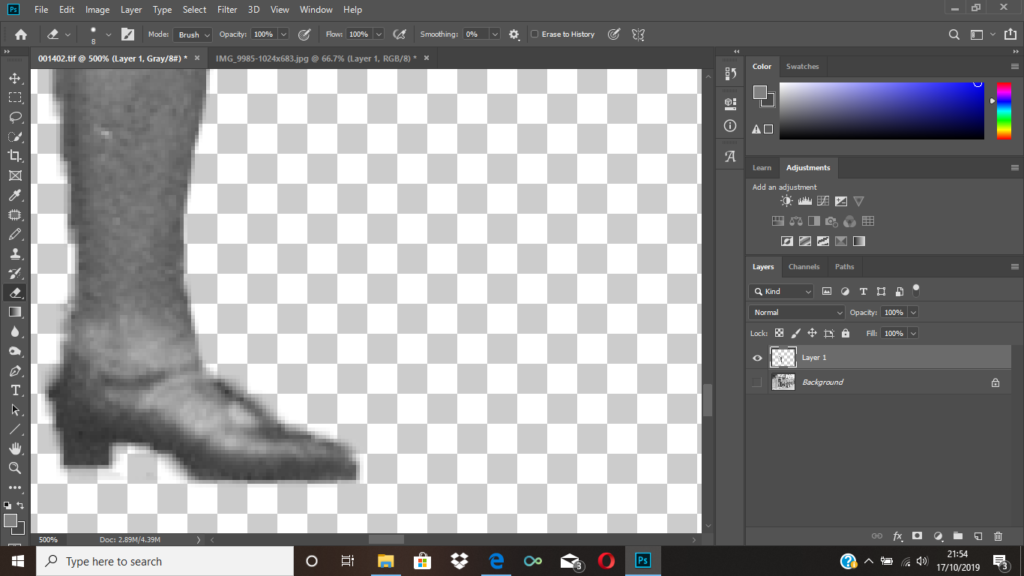
To achieve my final montage, I used the archive image seen above. I thought an interesting part of the image was the nurse and the soldier shaking hands, and also the medical sign. I selected both of these areas using the quick selection took, so that I was then able to place them onto my image. After selecting them, I used to eraser tool to clean up the edges as I knew they would be going onto a photo with a bright background.
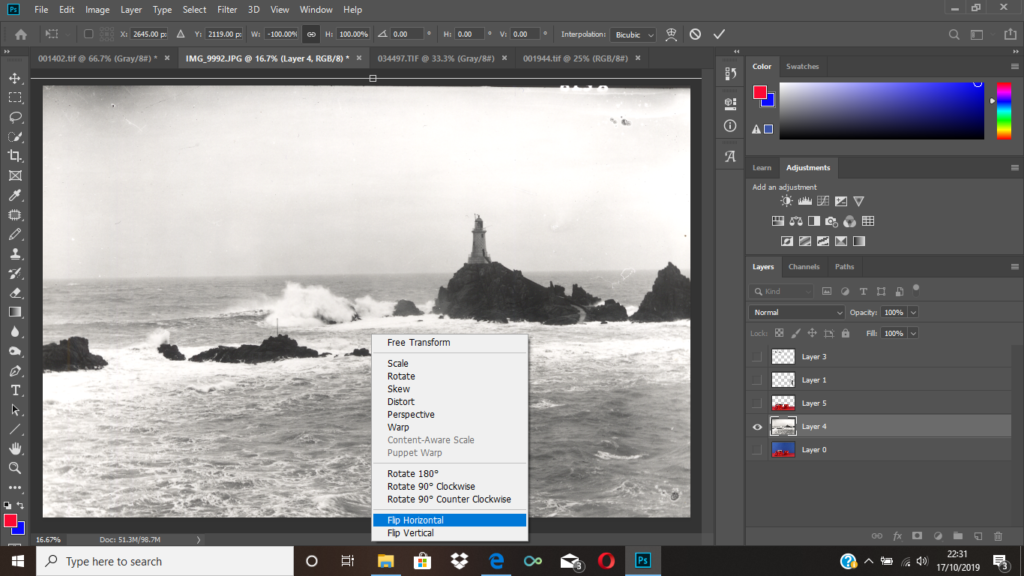
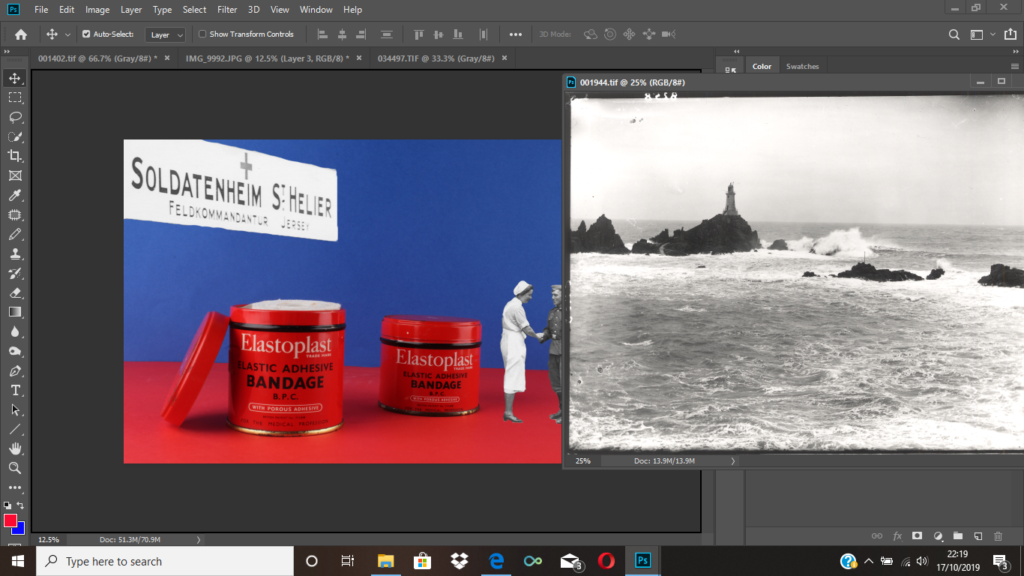
After placing the two sections of the archive image, onto my own, I then went on to open another archival image of a Jersey landscape as I thought this would make my montage more interesting. I selected the blue area of my montage with the quick selection tool, deleted the selected layer and dragged the archival image on. Since the lighthouse would’ve originally been covered to the my placement of the medical sign, I then flipped the image horizontally.
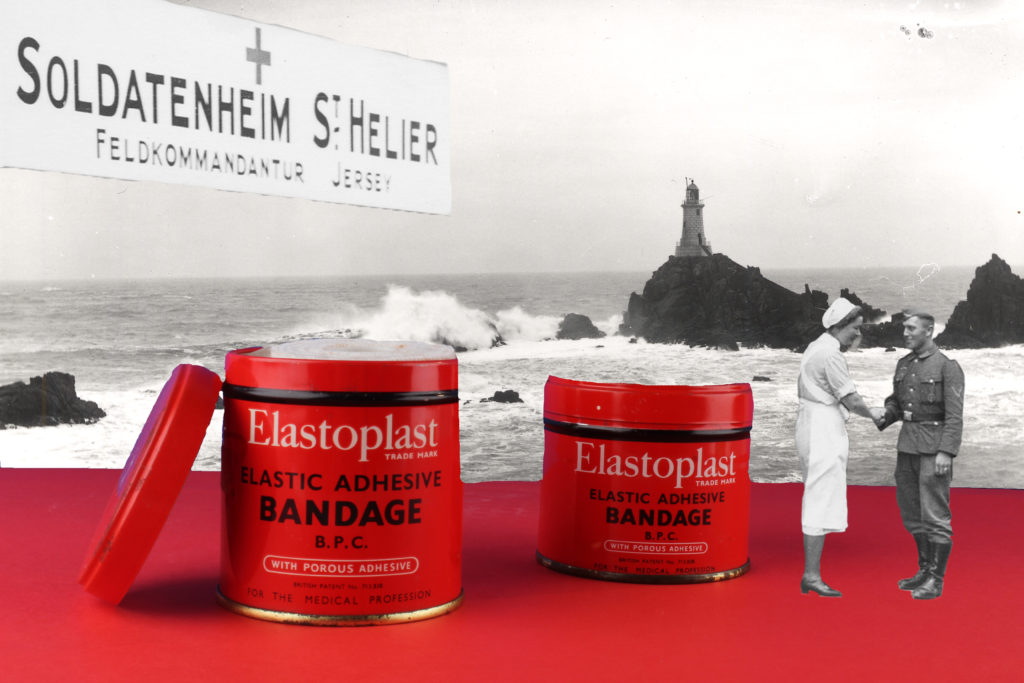
Initial images vs. Final images
1st montage:
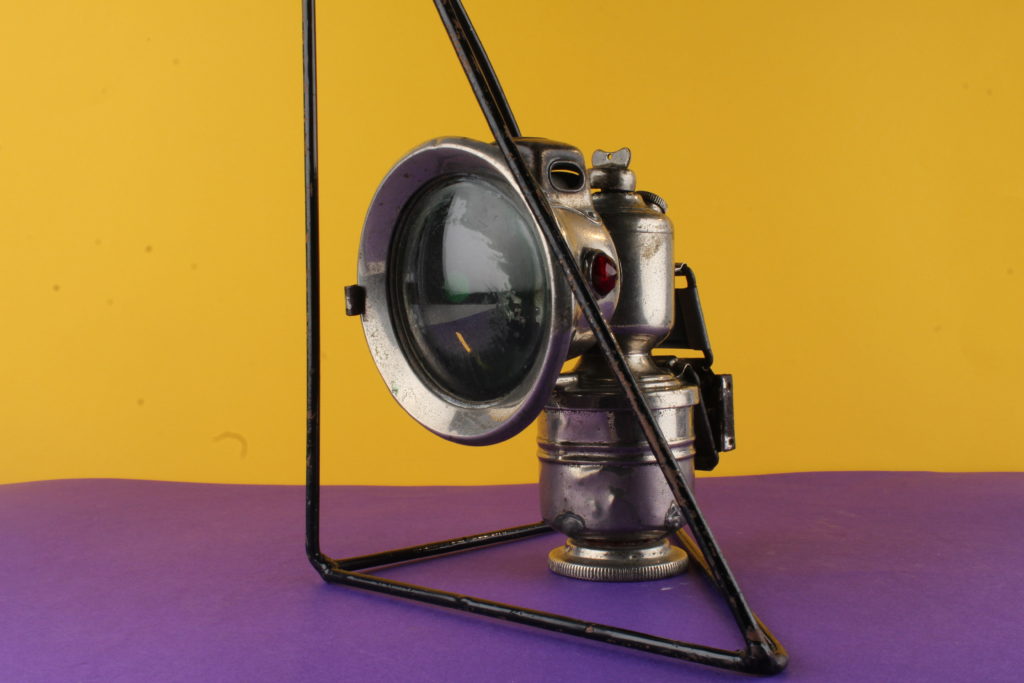
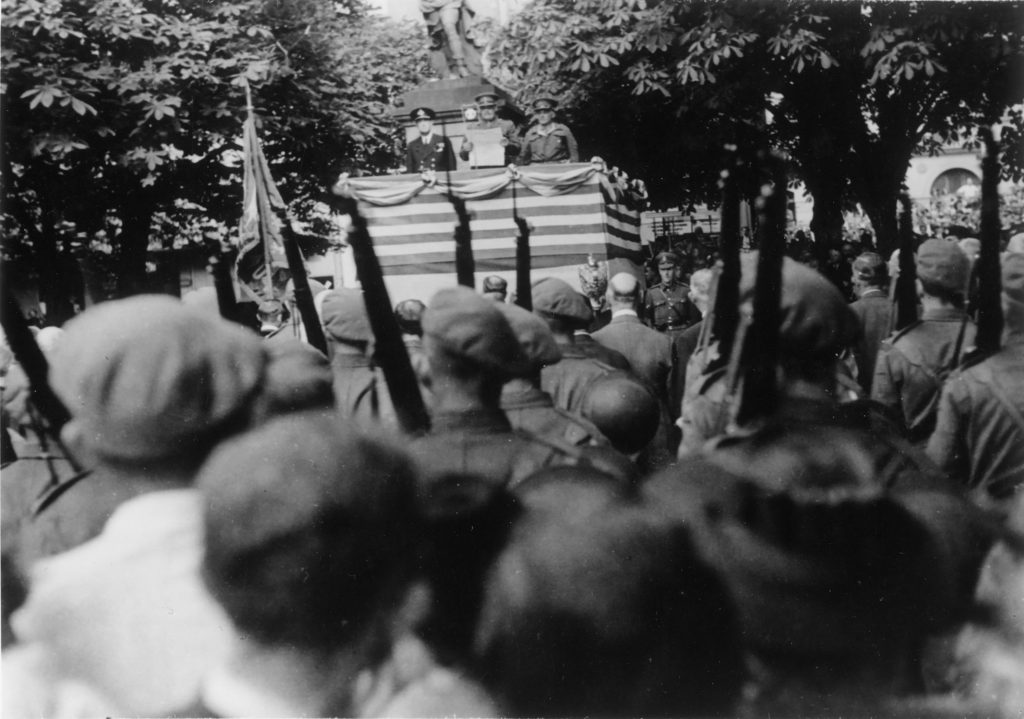
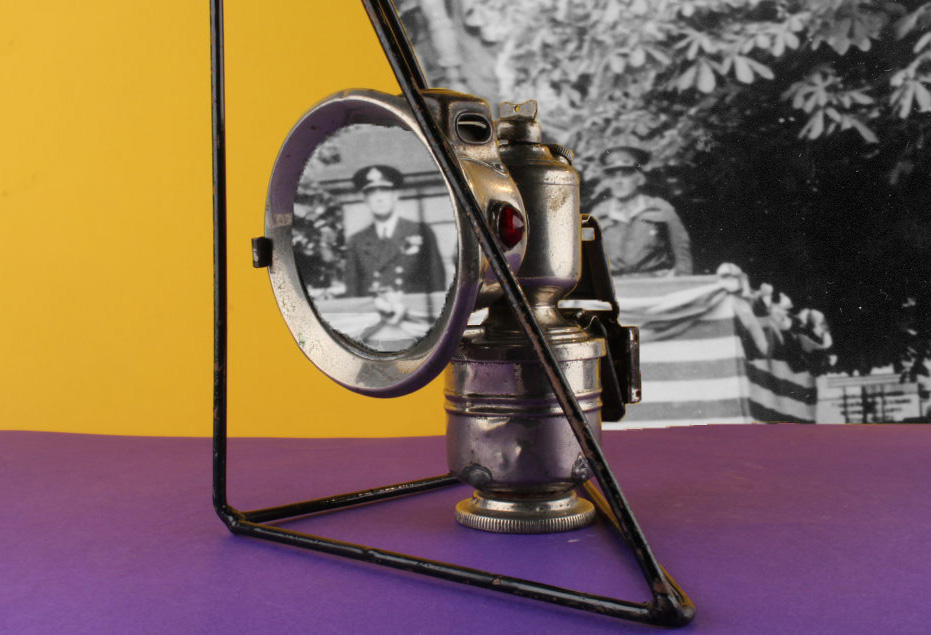
2nd montage:


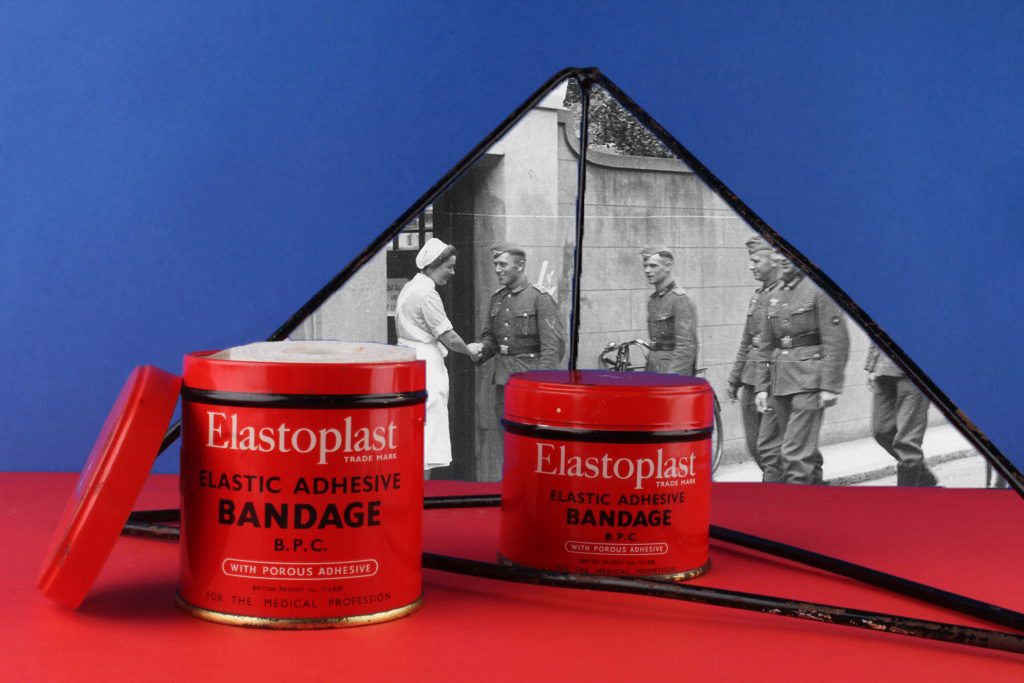
3rd montage:

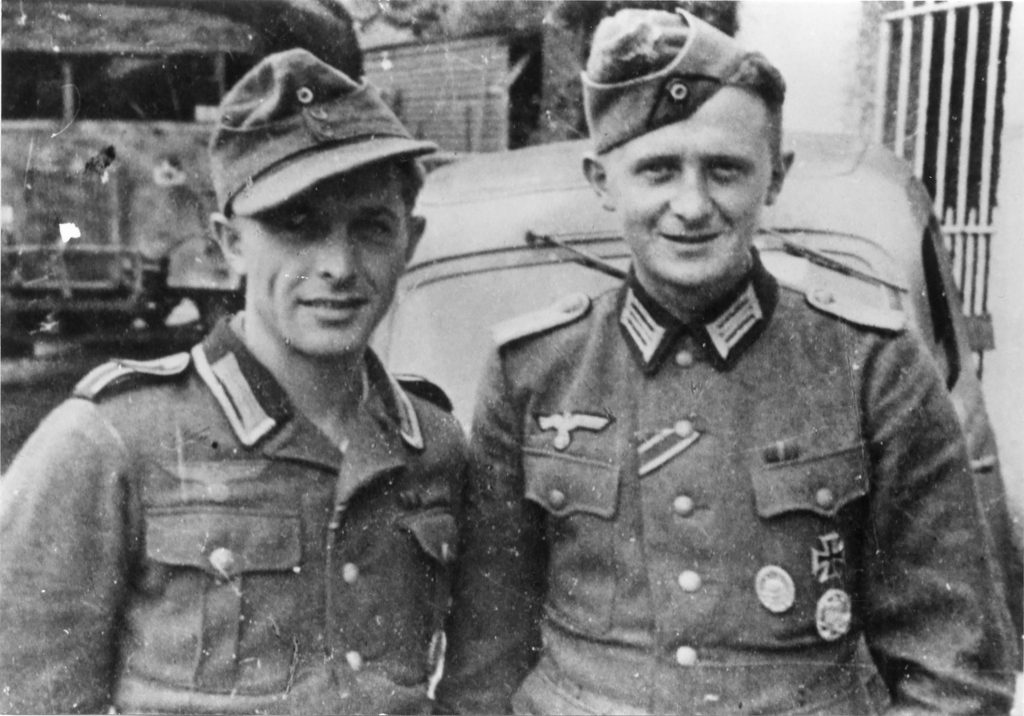
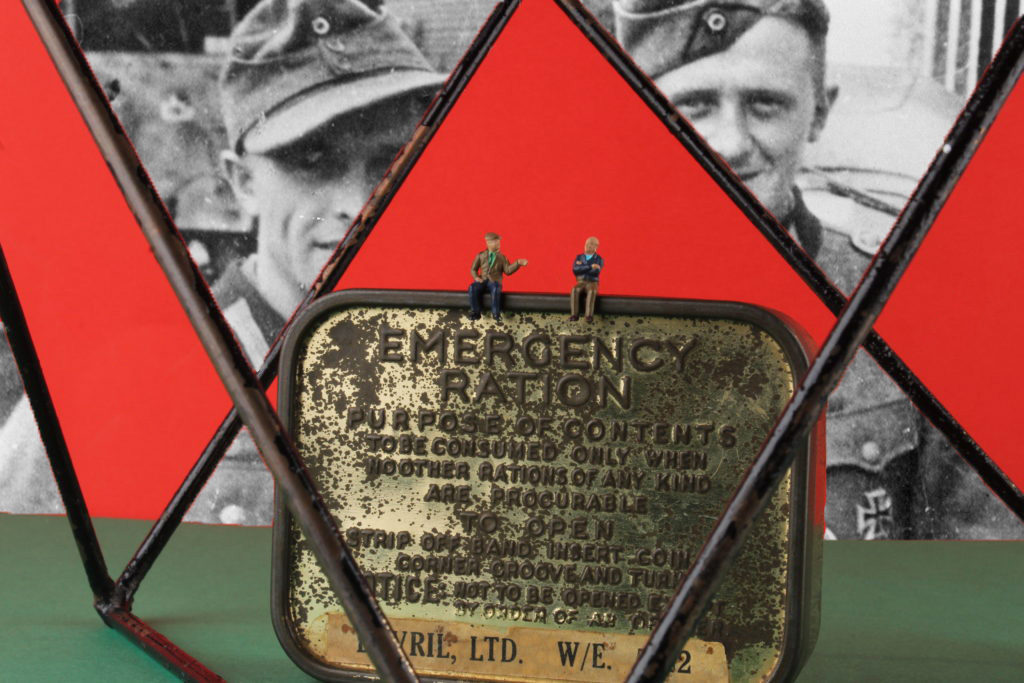
4th montage:
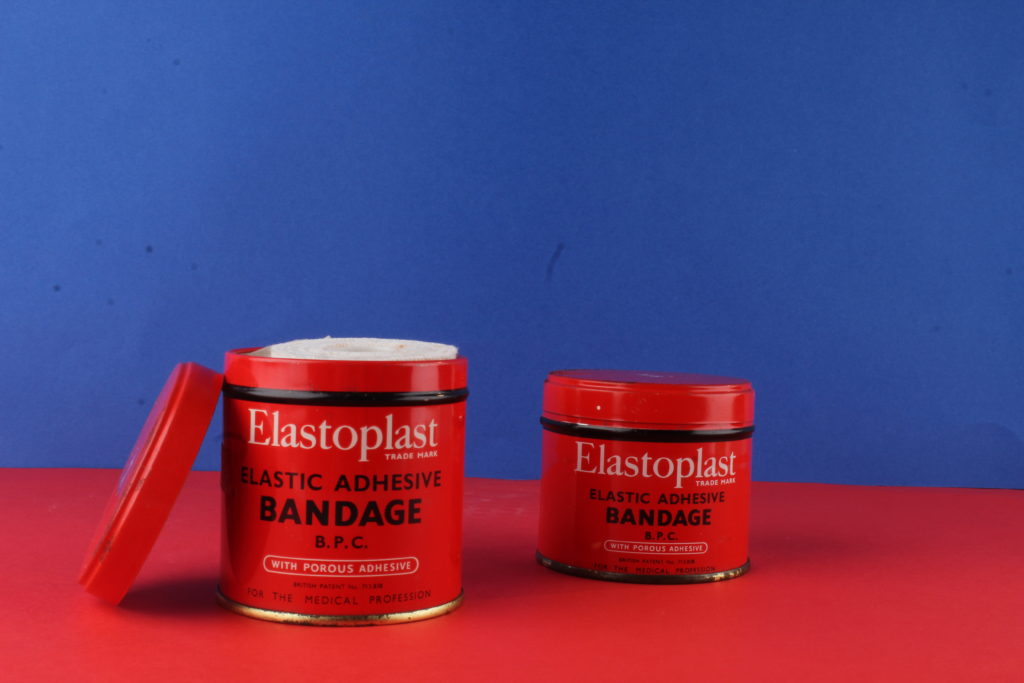
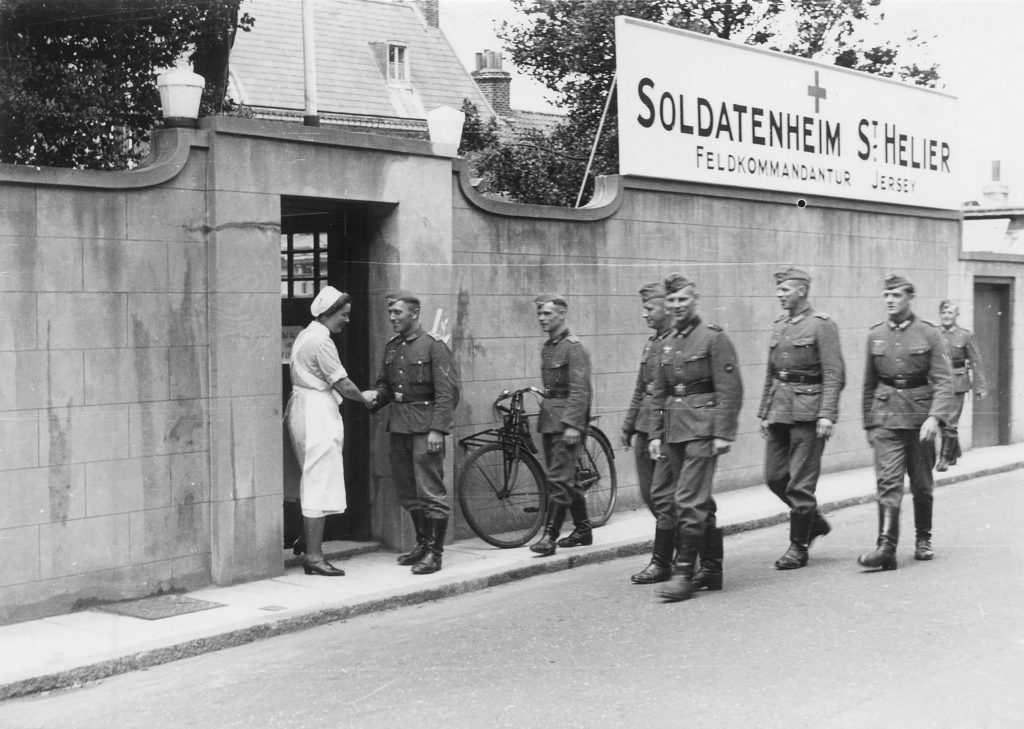
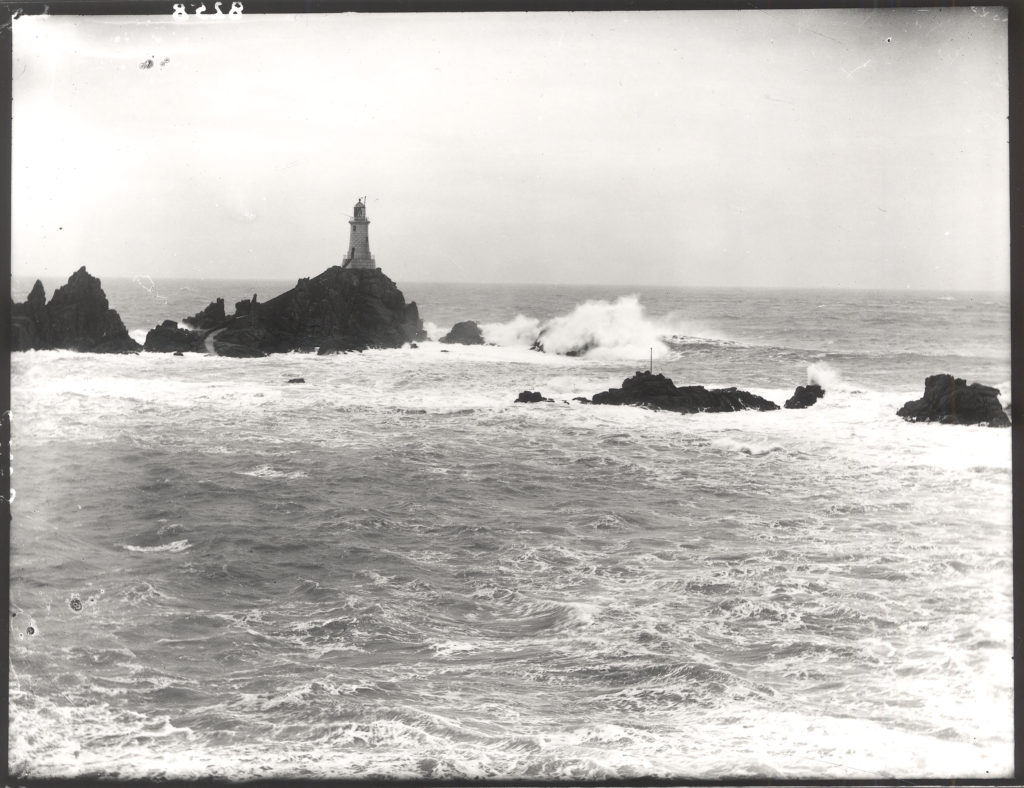
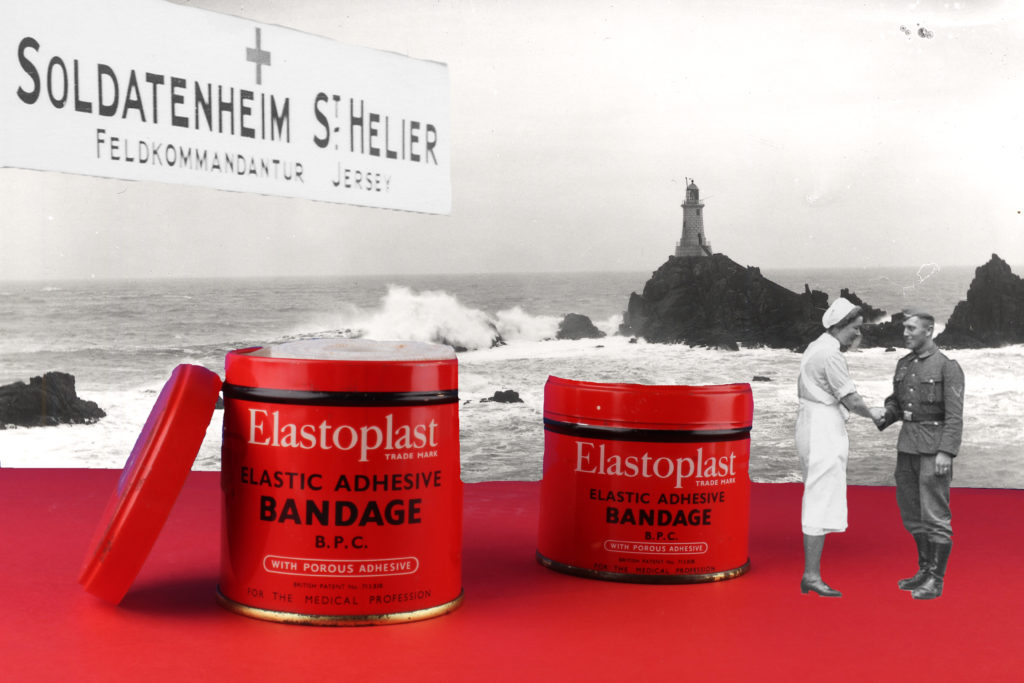
First lighting setup
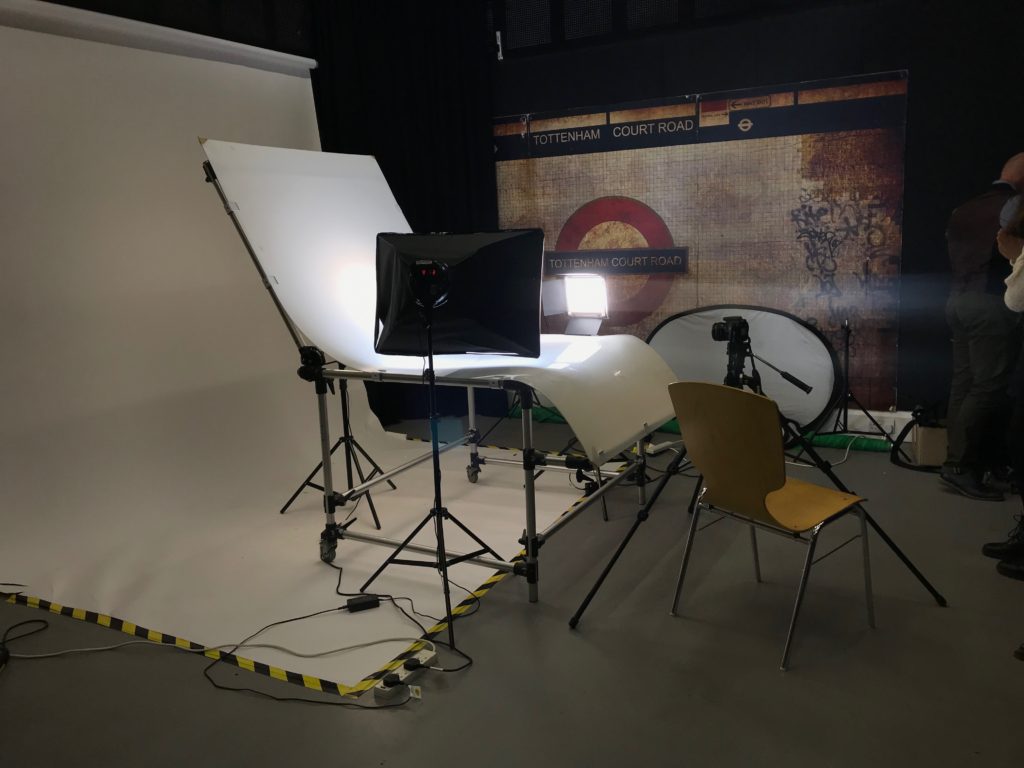
The light on the left is the continuous light, which is also known as a fill light as it has a diffuser of it. When photographing it should be set up to around 500 kelvin, and the dimmer can be adjusted in order to make the light brighter or darker.
The light on the right side if called a key light, which is the strongest light. It projects a very strong, clear light in for the camera to clearly be able to focus on the object.
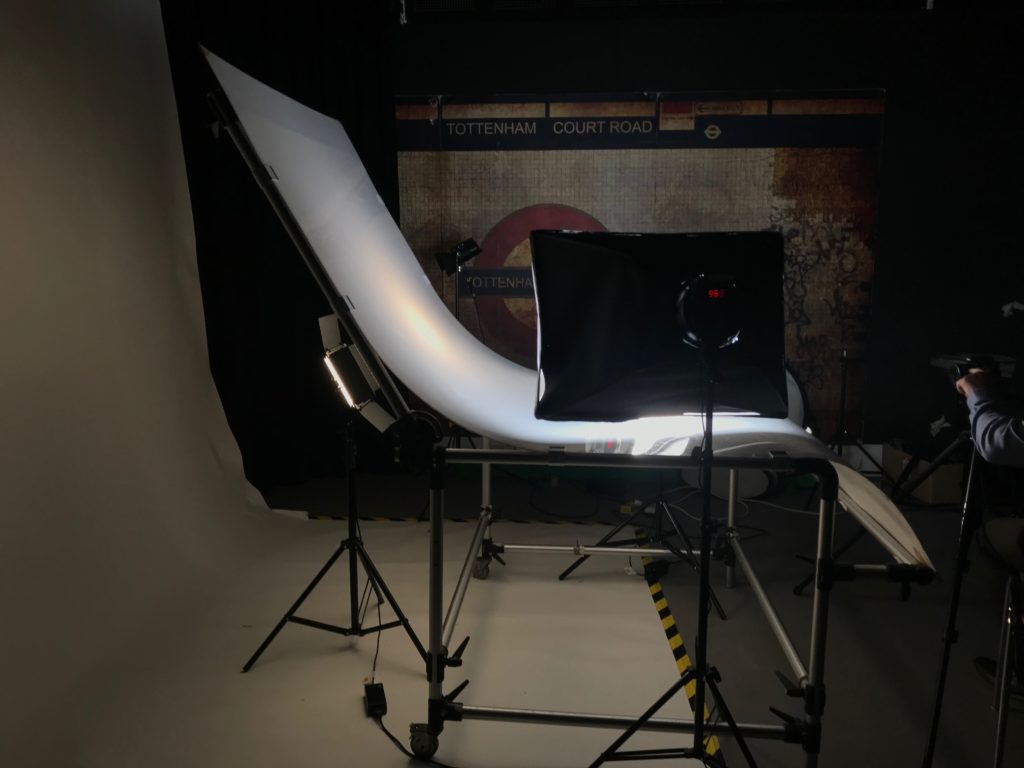
Behind the backdrop, we also have a back light. This helps the backdrop appear slightly lighter, as it is translucent and allows minimal light through.
when photographing using this set up, you should use a slow shutter speed , which means it is a good idea to use a tripod and a cable release as it will mean the camera wont shake and make the images blurry. The white balance should be adjusted to match the type of light the continuous light is emitting. The F stop should be quite high, around 16 as this gives the image a shorter depth of field as the aperture is smaller.
This set up is effective when taking images of things with dimensions, as you can experiment with angles and lighting in order to emphasize different parts of the object. This is also useful when capturing lots of objects together, as it allows to a lot of space, and it contains a lot of different lighting set ups to effectively be able make the groups of objects look aesthetically pleasing.
Second light setup
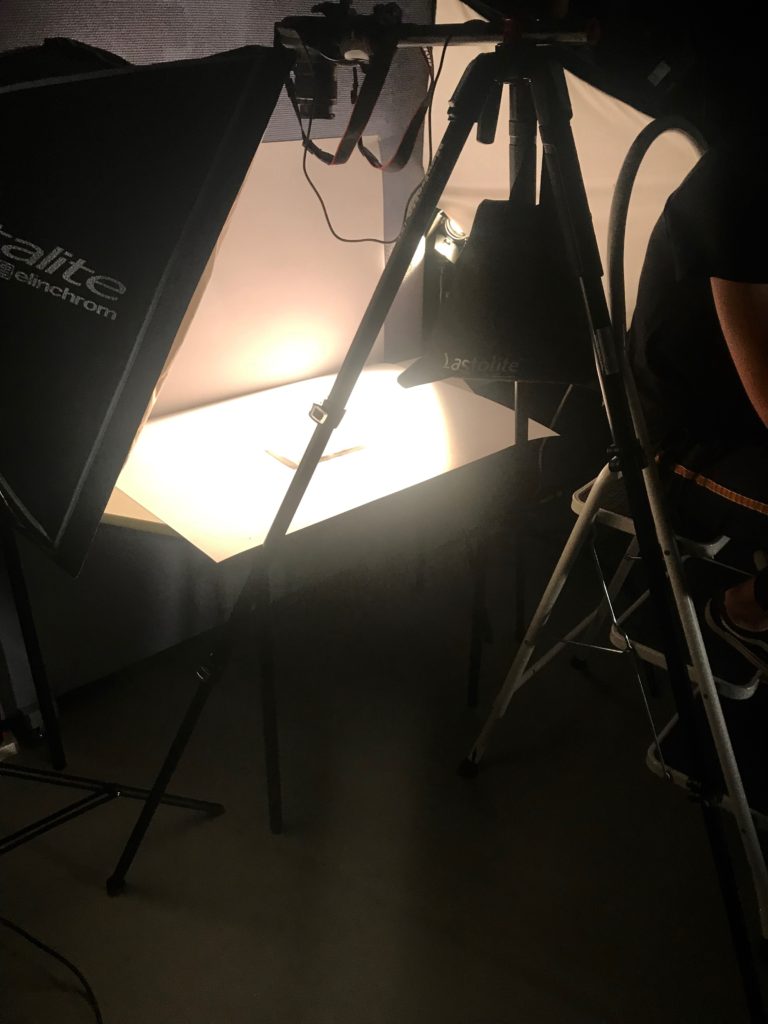
This set up can be used to capture images from a higher angle. On the left, there is a flash head light which is triggered by the transmitter which is connected to the camera. It is also important to place a sandbag on the tripod in order for the weight to be balanced, so the camera doesn’t fall over. It is important to place the camera parallel to the 3rd leg of the tripod as this means the camera will be straight. To be able to see what is being photographed, there is a ladder placed on the right hand side, to help you be able to looking through the view finder.
This set up is highly effective when wanting to photograph things that appear 2D or almost flat, such as books, or newspapers since you may only want to be capturing these things from a front facing angle.
Photo shoot
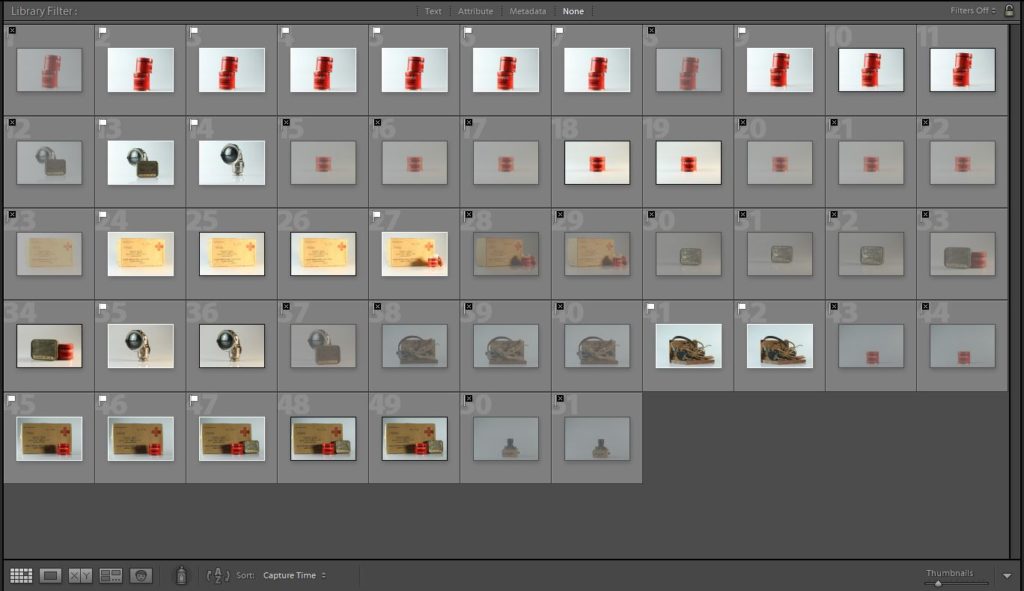
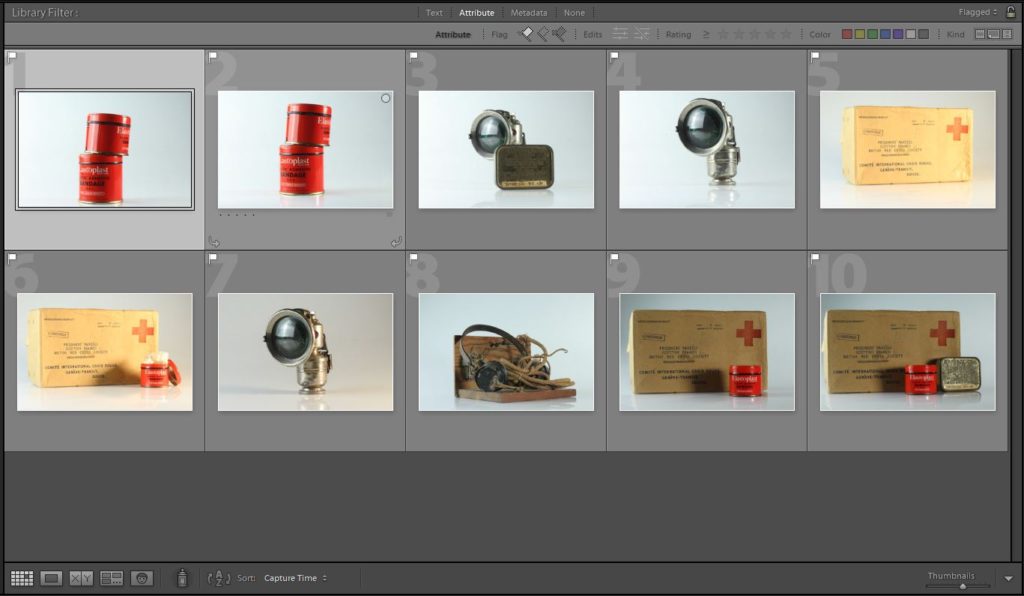
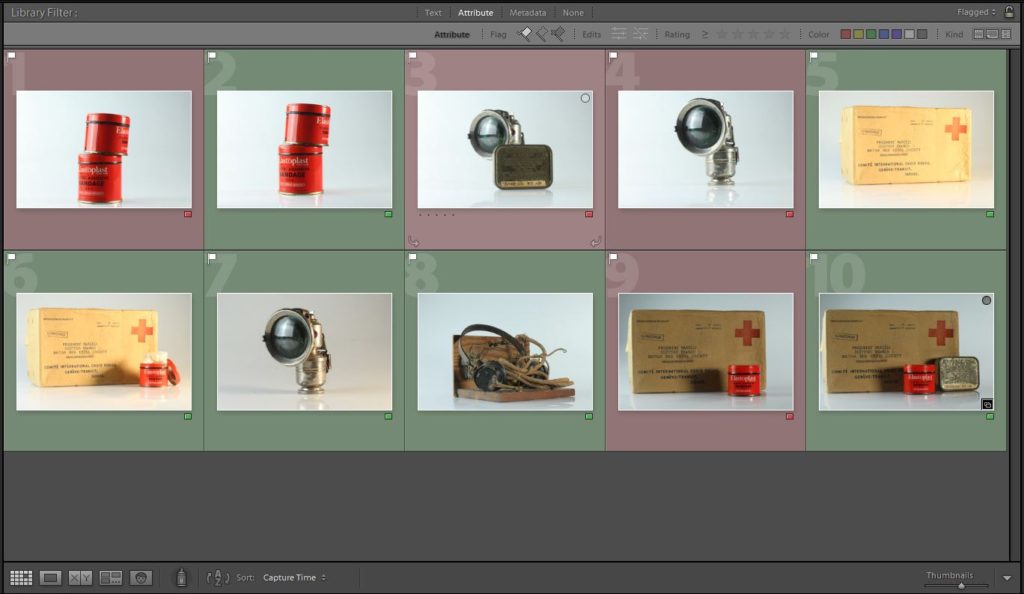
Developing


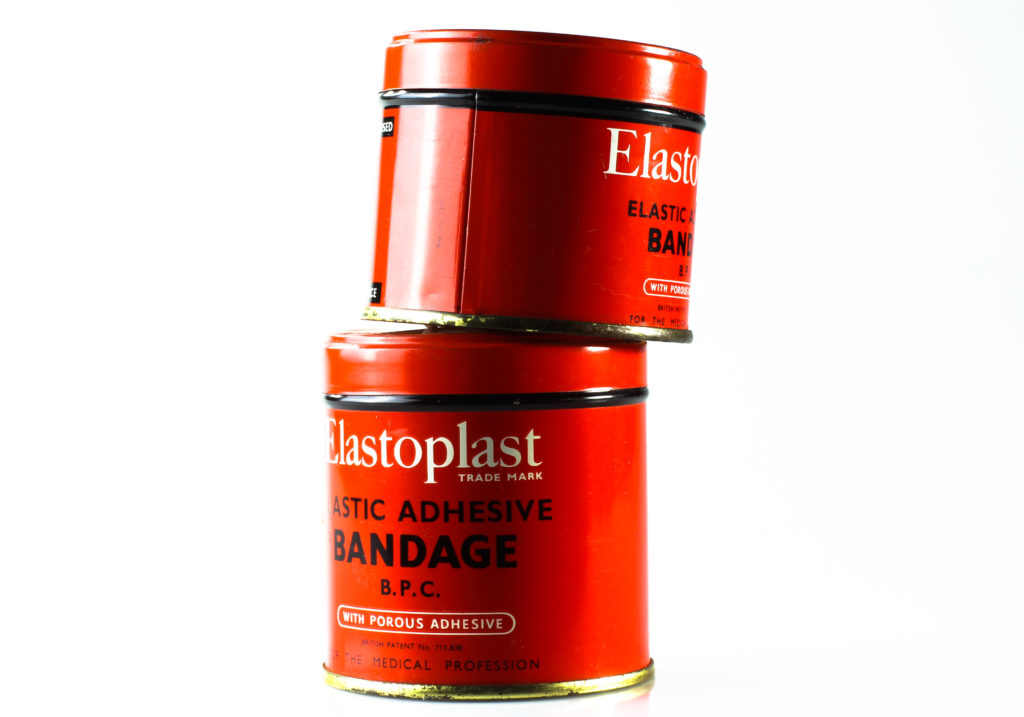


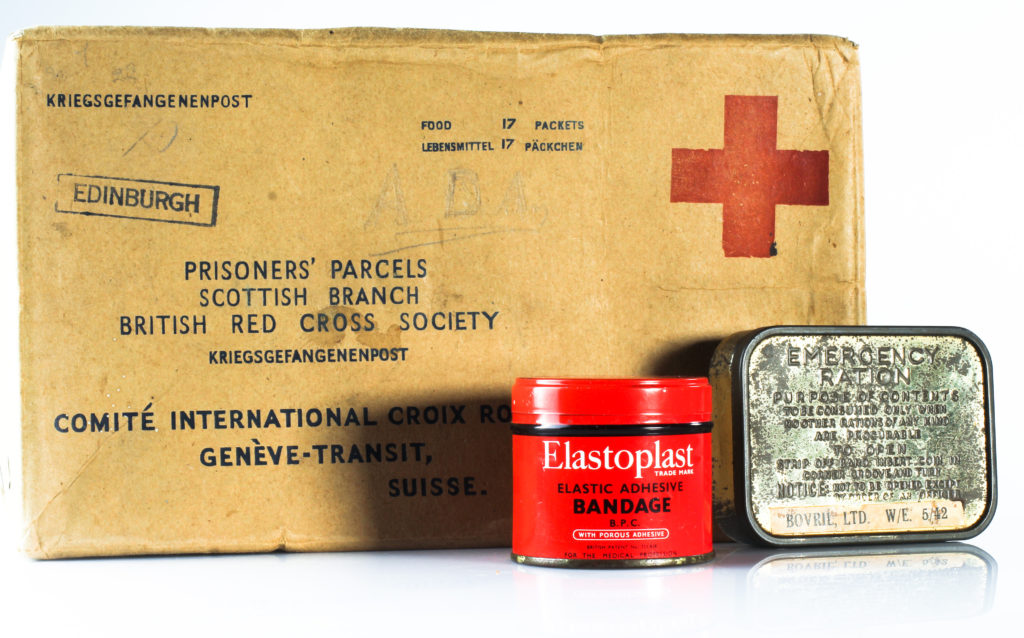



Initial images vs. Final images
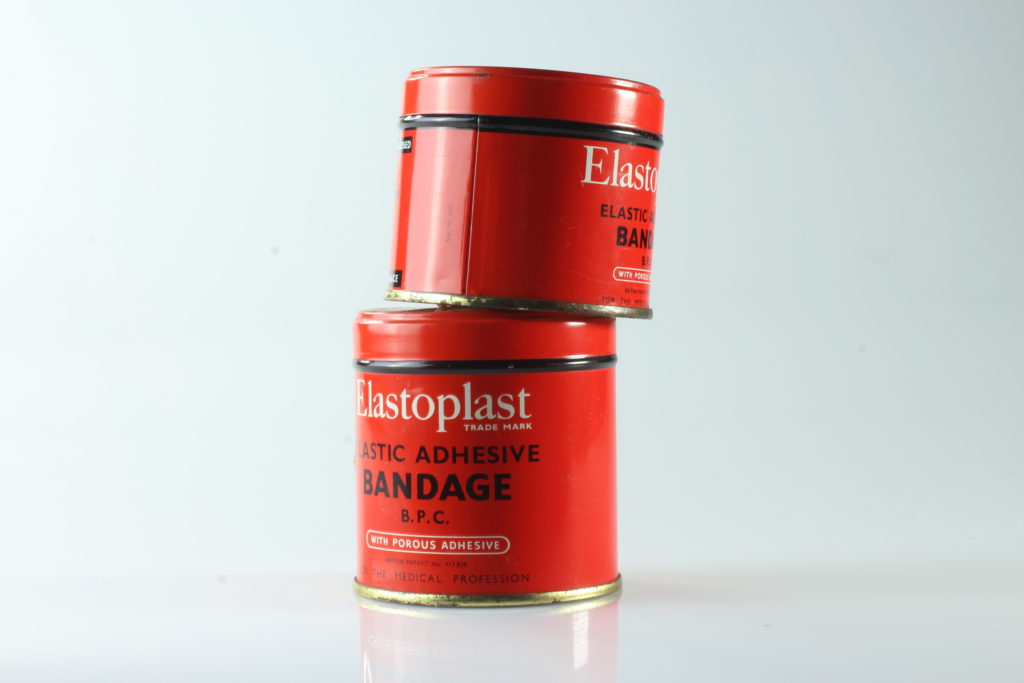

I really like how the object in the image above stands out a lot more from the background. I also think the colours are a lot more vivid, and they stand out more as it almost appears as there is no background. I like how my final picture has more dimension to it due to the emphasized shadowing and the highlight on the objects.
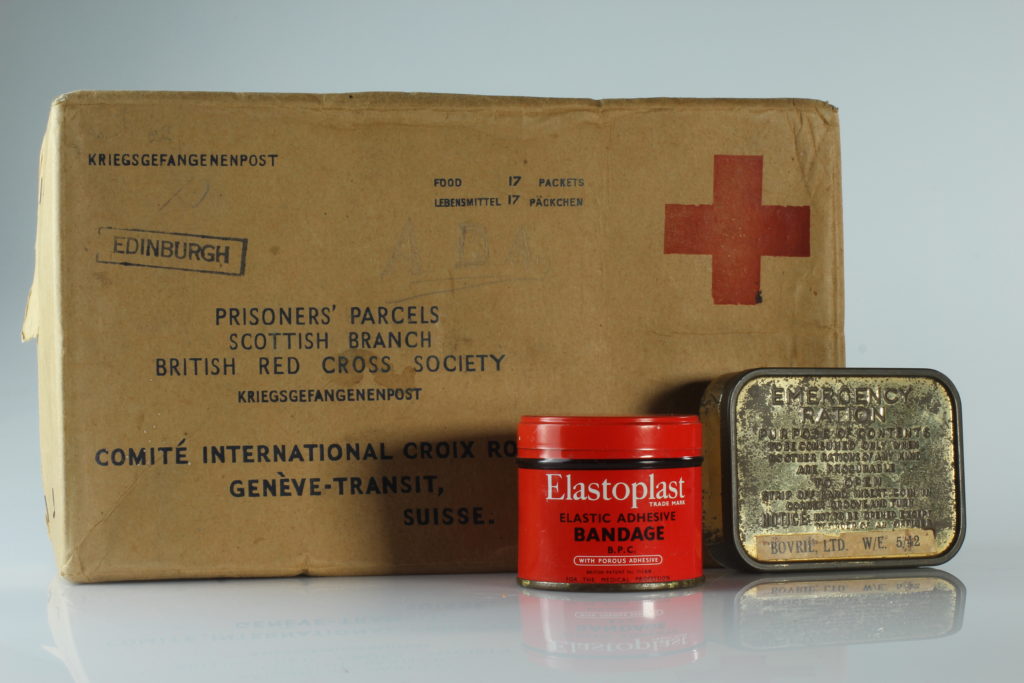

The objects in this image all have their own different type of texture, which I think is brought out more in the final image. I like how you an see all the details in the parcel such as some staining, and scratches. You can also see the rusting on the emergency ration box a lot more clearly. I think this makes my image a lot more successful as it gives the photo a lot more character, and it emphasizes how there is a rich story and history behind each object, which otherwise may not have been as notable to an audience.
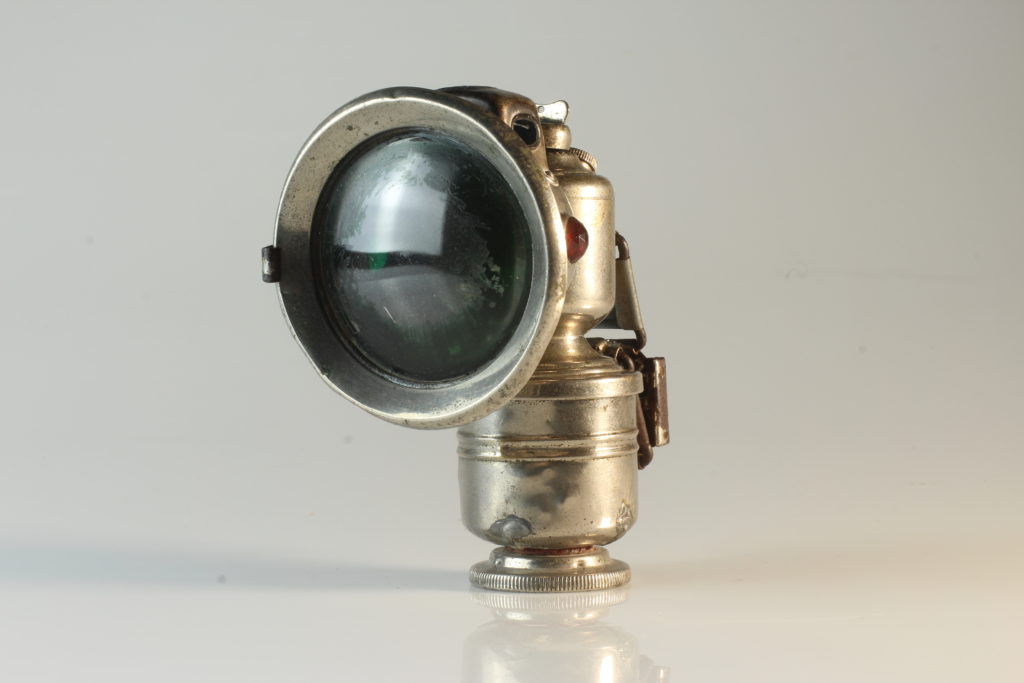
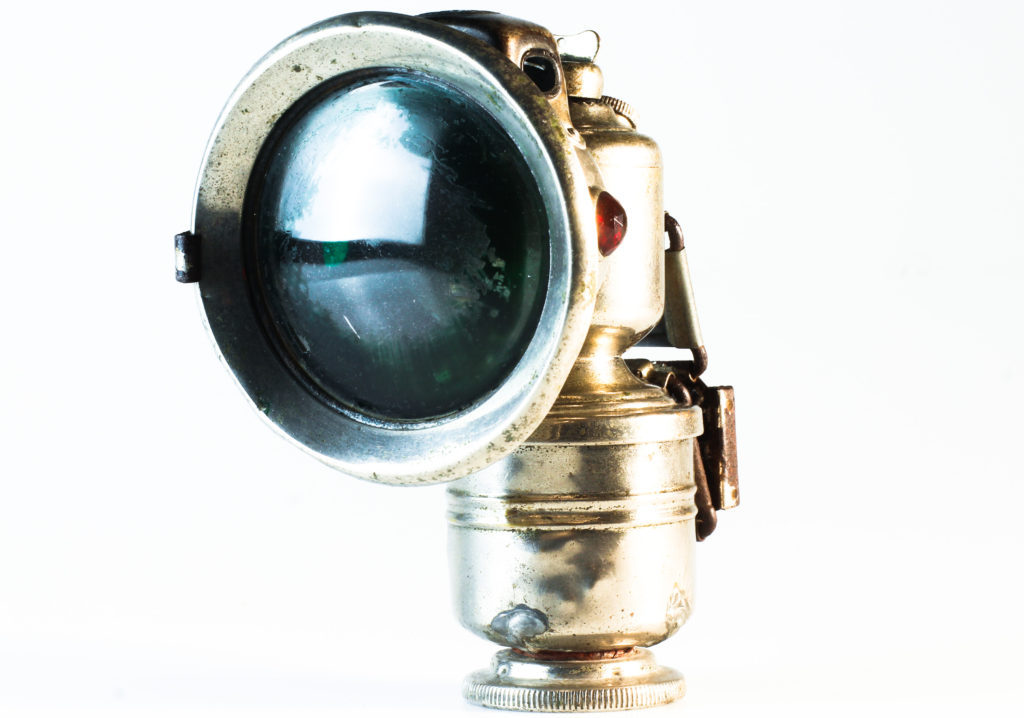
I like how the bicycle light looks a lot bolder and clearer in my final image, compared to my initial one. I think this makes the image far more interesting because it makes the object look slightly more mysterious, which may be intriguing to an audience. However, I think the final outcome could’ve been improved if I would’ve left the shadowing of the object on the bottom left hand side as it would help add a more dramatic effect to the picture.
For my homework into capturing the interior and exterior of my home and the area in which I lived, I experimented with a range of different locations and places in order to best present the place in which I lived, and to best show the personalities, attitudes and lives of the people I live with/around through presenting their houses and what is included inside/outside of them. I captured a range of photographs, ranging from my street to the inside of rooms and houses, in order to encompass both the “interior” and “exterior” aspects of the project.
Below my contact sheets can be found where I have made a selection of images to bring forward to the editing process:
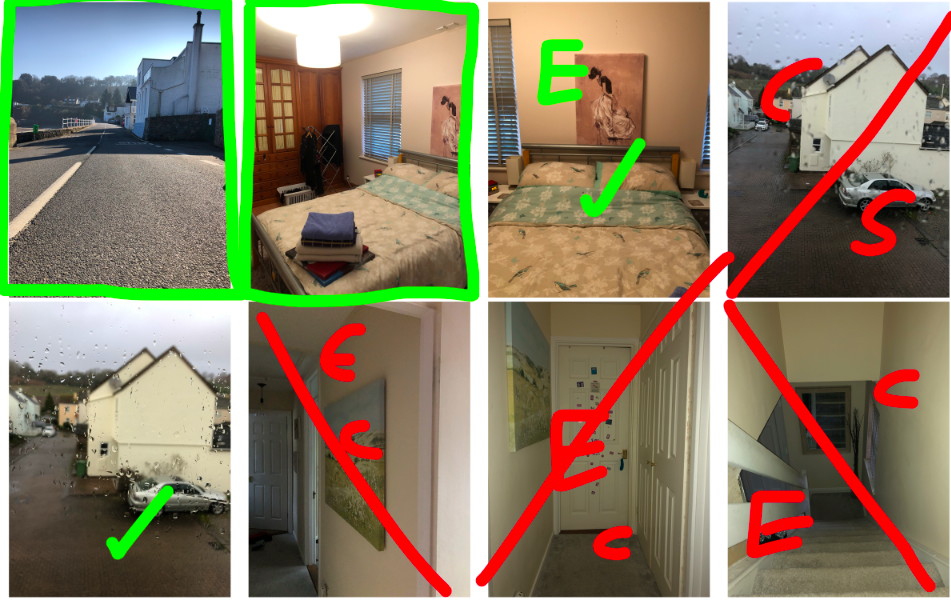

After selecting the images I wanted to use, I moved onto Photoshop to experiment with the editing of the images:
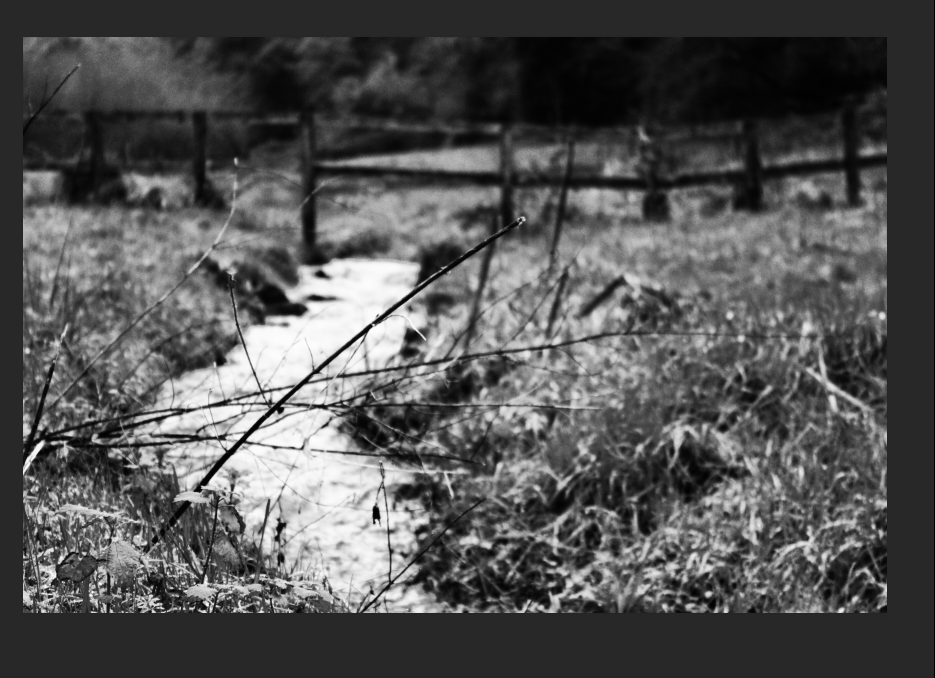
For this first image of the exterior of where I live, I decided to make the initial version of the image black and white as this gave the shapes and textures of the image more emphasis. After turning the image mono-chrome, I decided to further experiment with the image by adding a small amount of colour.
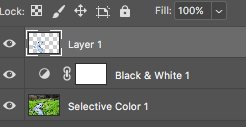
I used the lasso tool to cut around the water of the image, and copied this onto a separate layer so that I could edit the water and the background separately.
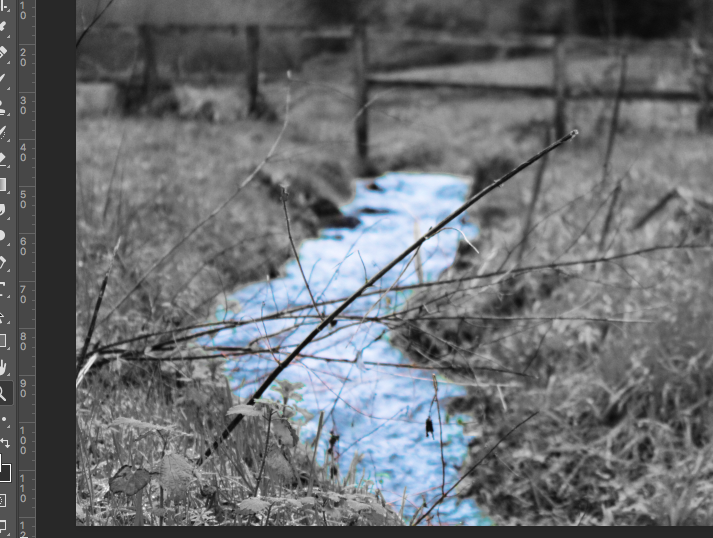
After separating the 2 components of the image, I used the “selective colour” tool to increase the cyan and blue colours of the image, giving the water a heightened colour which contrasted the monochrome background.
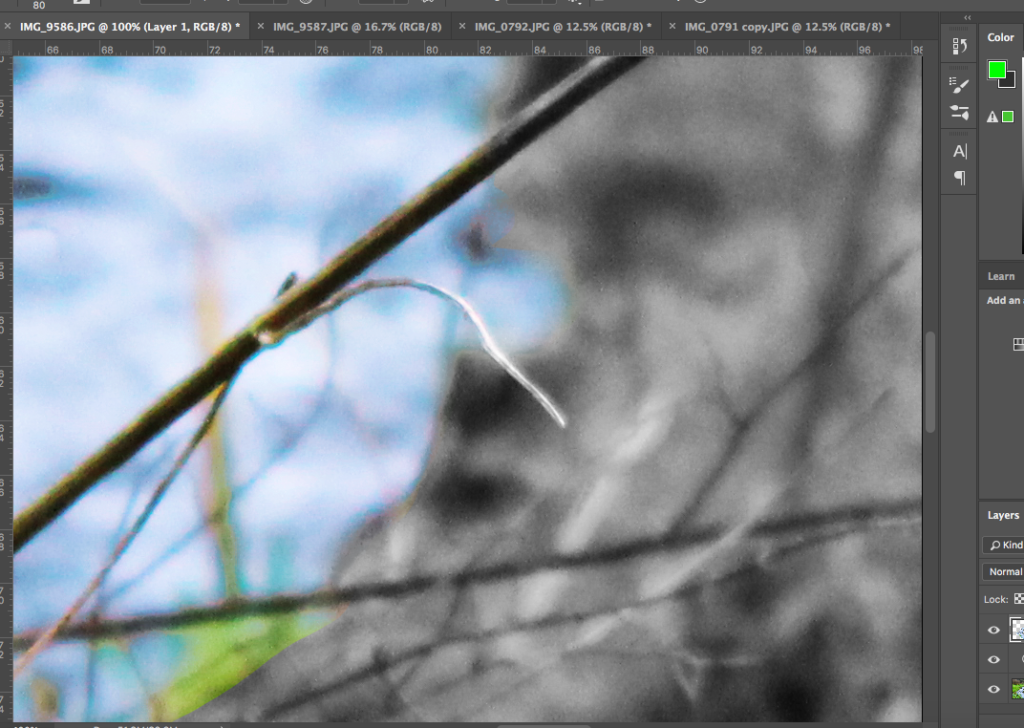
I then went around the edges of the water layer with a soft eraser tool to soften out the edges of the water, allowing them to blend more with the edges of the background. I also used the eraser tool to erase the green plants that I had accidentally included in the layer, which meant that the only thing left in colour was the water. I feel like this gave the image a cleaner look, with the blue water looking more “natural” as opposed to simply being cut and pasted over the background.

After heightening the contrast of the whole image after I had finished editing the water, the above was my final result. I feel like experimenting with the flash of colour in the water allowed for me to compare the 2 versions of the image, and in turn I was able to decide whether I felt the pop of colour was effective at drawing attention to the image or not.


Above are the 2 possible outcomes. After comparing the 2 visually, I decided that my final image would be the purely monochrome image. I found that experimenting with colour allowed me to gain a better understanding of what worked for the image, and I concluded that the simplicity of the monochrome image allowed for more attention to be drawn to the texture, shading and shapes of the surrounding without distracting the viewer with unnecessary colour.
After editing this first image, I went on to use the same sort of process (increasing contrast, using selective colour editing or using monochrome) to edit the remaining images. Below is an example of one of the interior images I used:
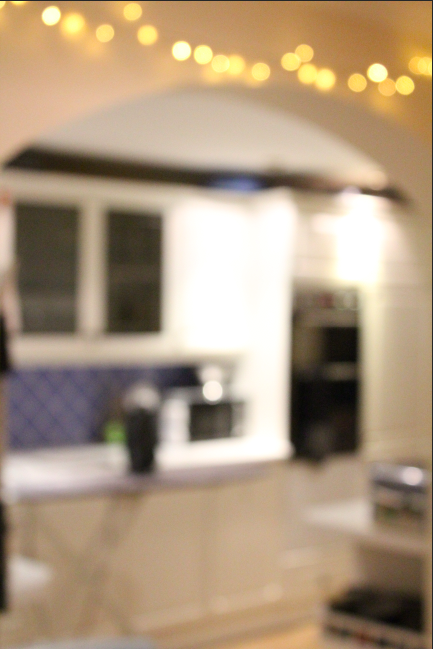
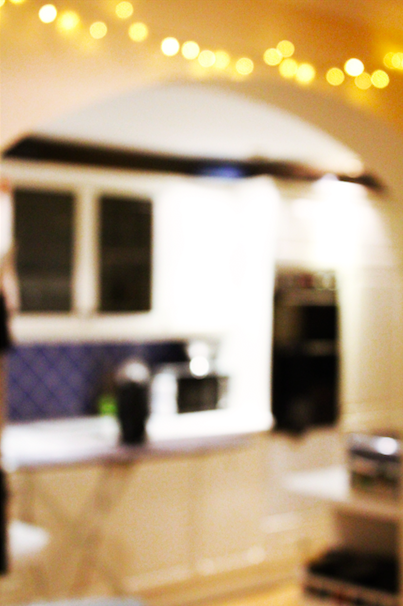
In order to create this image, I increased the contrast of the image, and used the selective colour tool to increase the brightness of the white in the background:
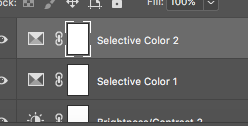
I decided to use this blurred image, as I felt it gave an intimate view into the interior of an individuals private life. The lack of focus allows for the interior to retain some privacy, and draws attention to the fact that the viewer is looking into the most private aspect of an individuals life; their home. I feel like although this image does not stick to the norms when it comes to its visual and technical layout, the concept behind the image fits the title of the project well, and therefore I decided on it as a final image or this reason.

I then decided to edit the image which I originally decided had an issue with its perspective. I used the photograph of the bookcase which I had initially taken using a handheld camera, and thus the image came out with the bookshelf appearing uneven and lob-sided, as shown underneath:
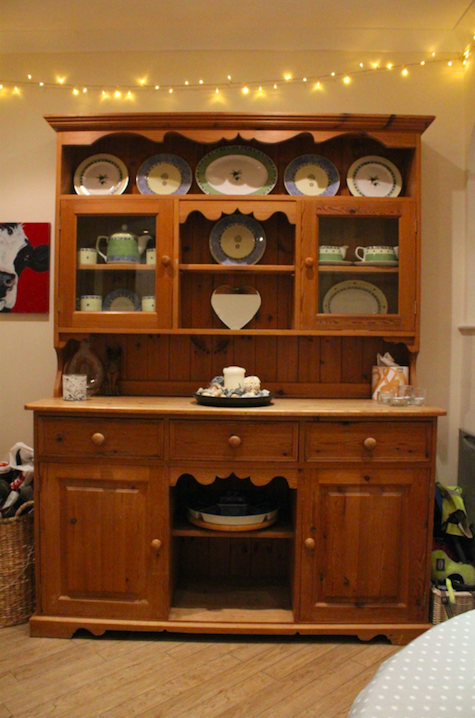
I took the image to Photoshop, where I turned the image monochrome (as I disliked the yellow tint to the image and felt the textures could be best emphasised using black and white) and then proceeded to alter the perspective of the image using CMD-T in Photoshop:
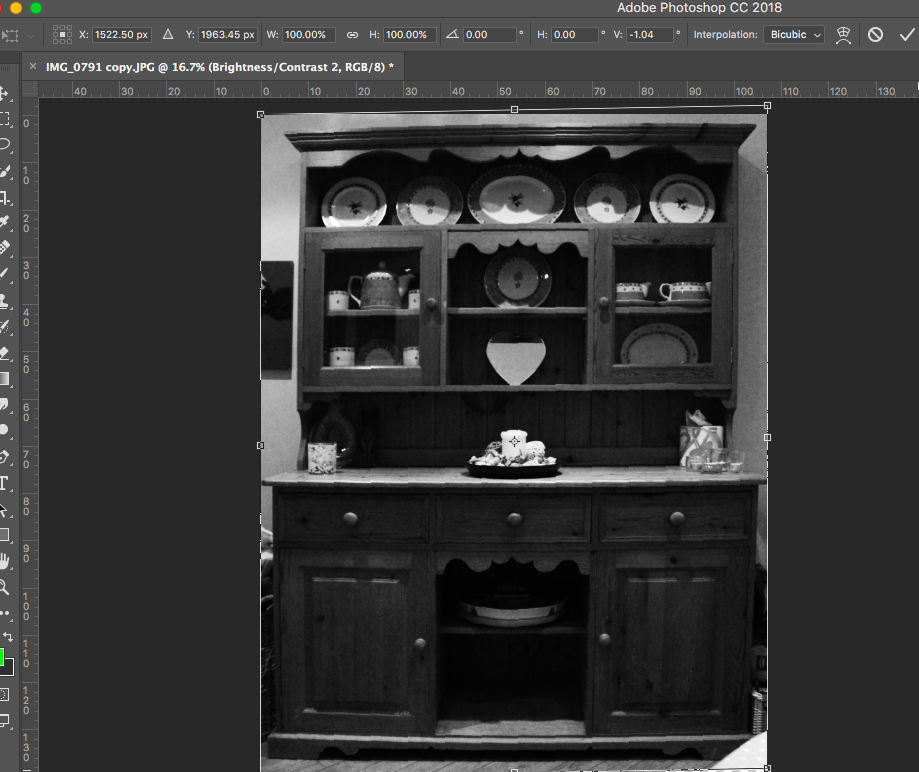
This allowed me to better straighten the cabinet, and thus I created a much more in-line, symmetrical image.
I then had to fill in the gap at the bottom of the image, left from where the image had been lifted due to the perspective change. To fill this, I used the spot healing brush tool, and allowed the software to fill the gaps in:
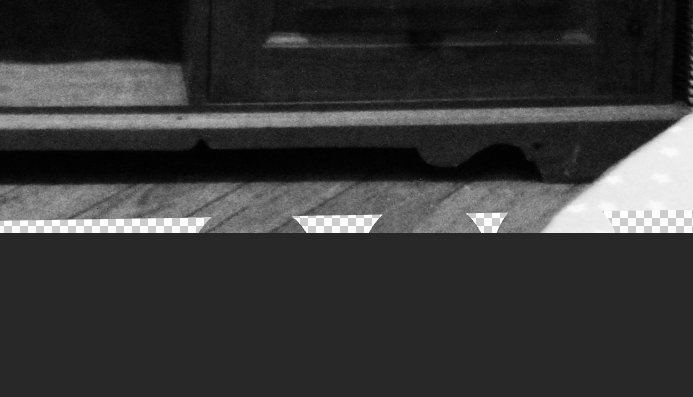
I then decided to remove the table corner in the bottom right of the image which distracted from the cabinet itself, and to do this, I also made use of the spot healing brush tool:


After this editing was complete, this was my final product:

I followed the same sort of process for the rest of my images, and developed the following as my final images:



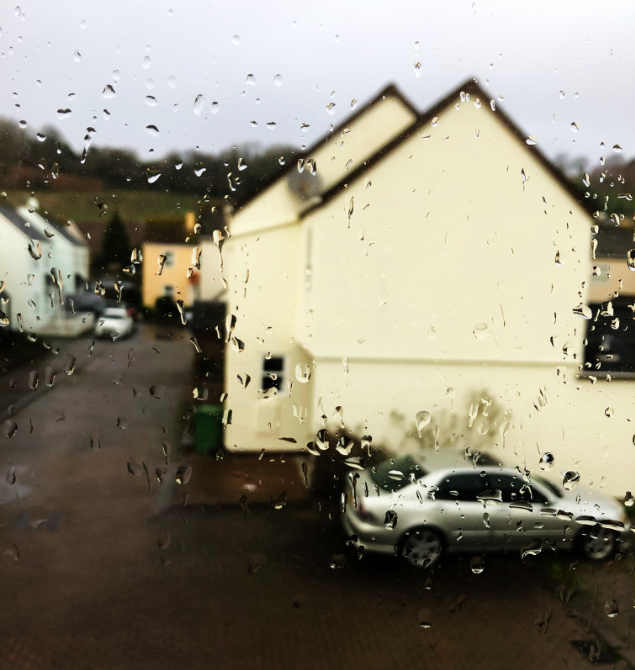
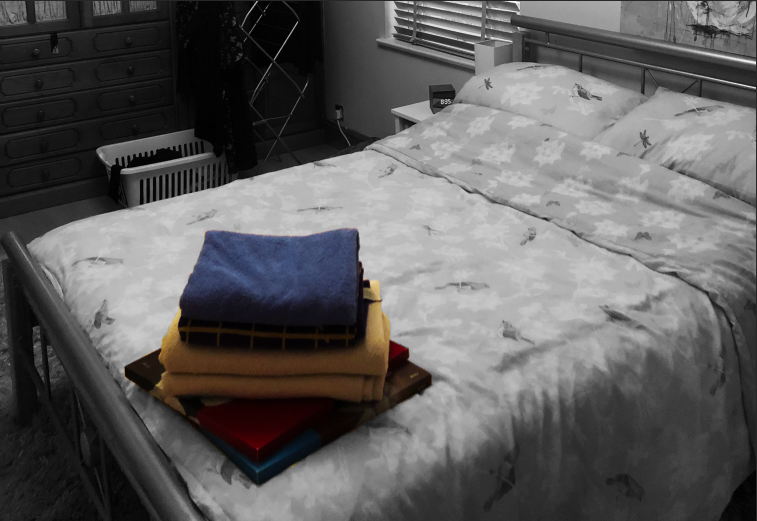

I feel like my final images for this project reflect the meanings of both “interior” and “exterior” well, with a range of images for each criteria. I feel like my final images give a feel and understanding to the viewer of the public and intimate aspects of the lives of individuals living in the houses and areas that I photographed, and the intimacy of rooms such as the bedroom and kitchen allow for the viewer o gain an understanding of the personality of the people living inside and around these rooms. I feel like the editing process allowed me to emphasise certain aspects of the images, and downplay others, which I felt was an effective method for drawing attention to certain components of the image which helped to better convey the meaning of the image.

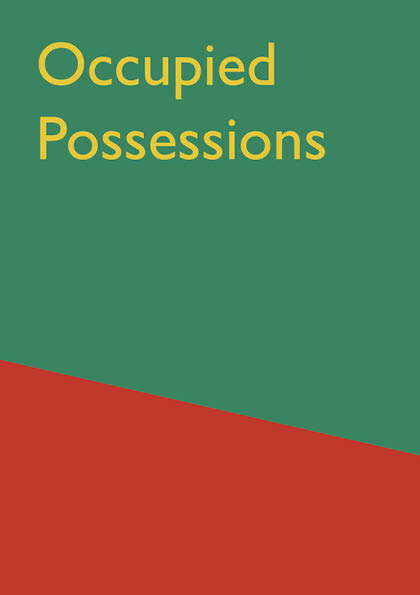

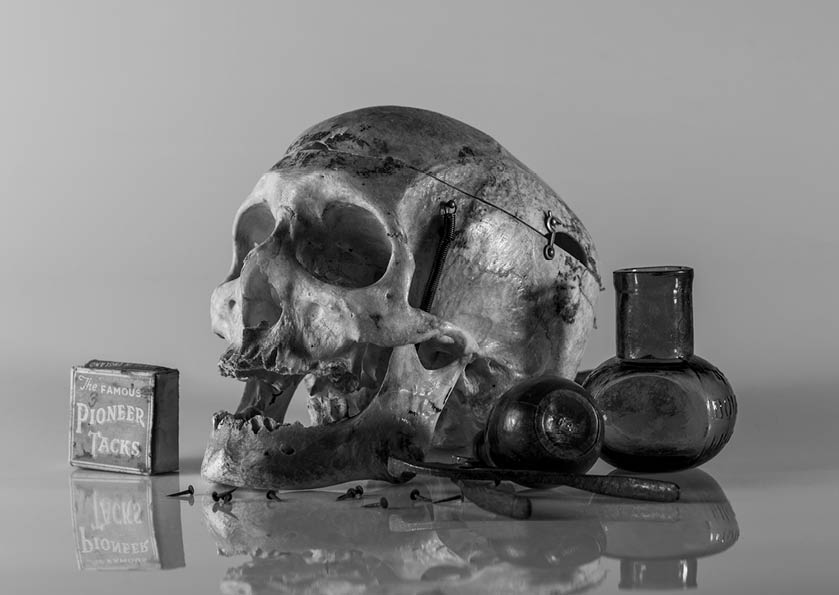
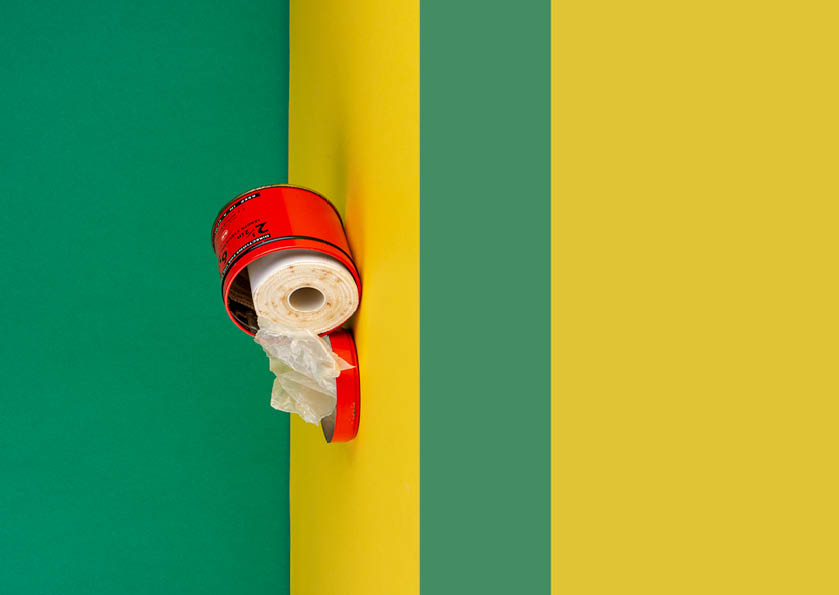
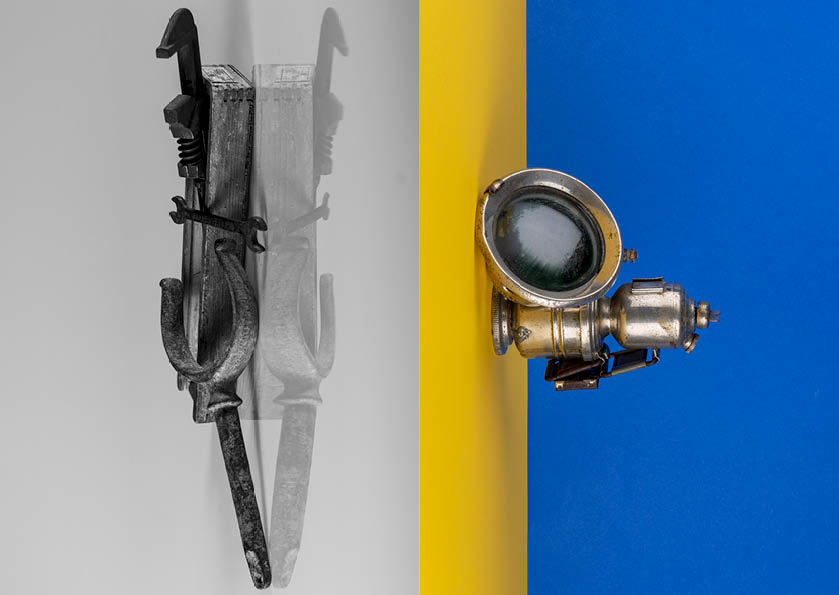
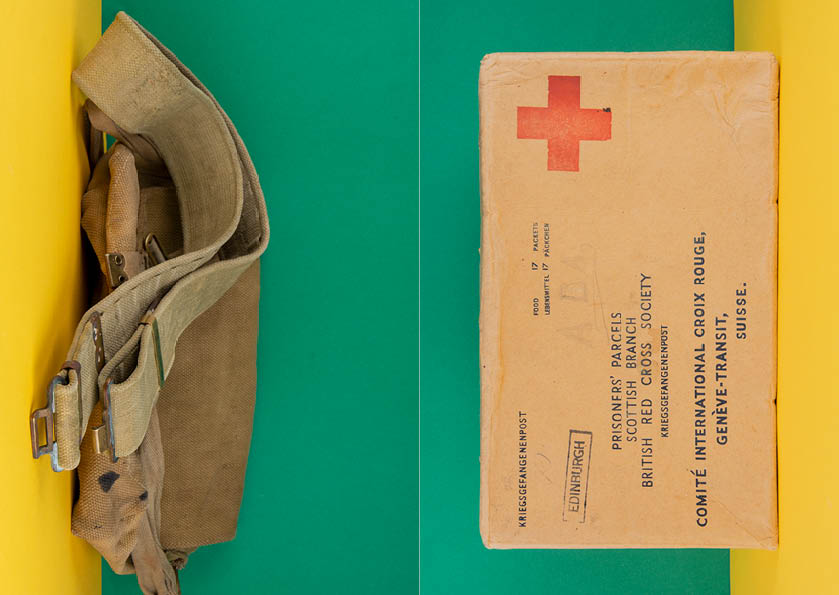


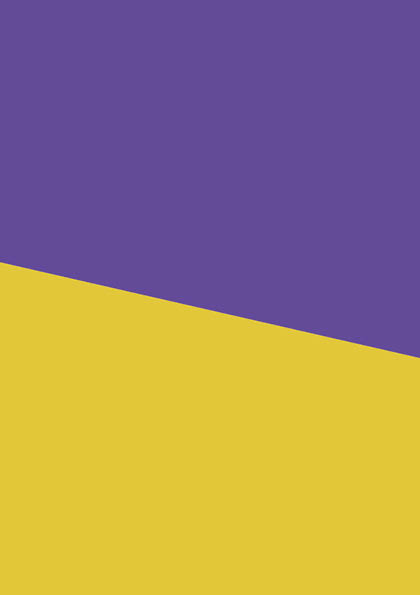
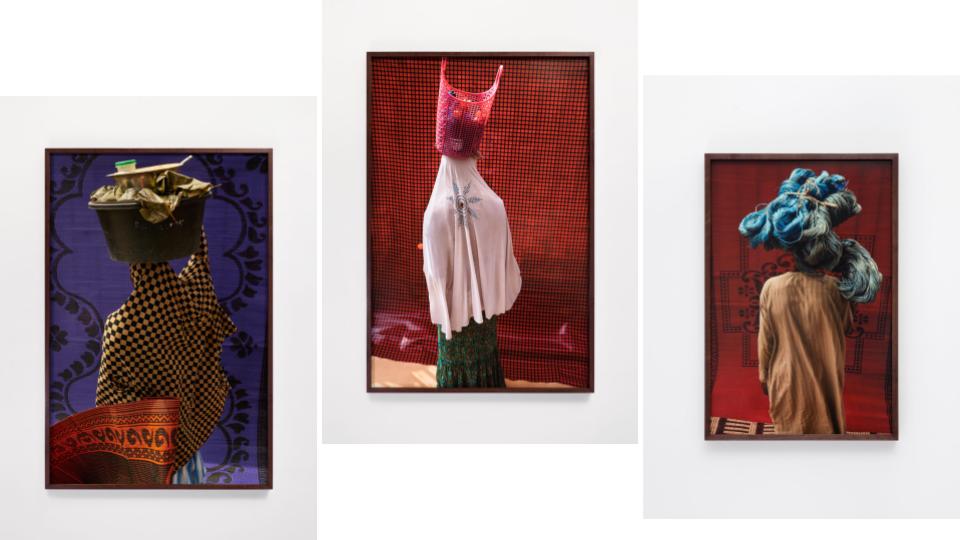
Lorenzo Vitturi:
Lorenzo Vitturi (b. 1980, Italy) is a photographer and sculptor based in London. Formerly a cinema set painter, Vitturi has brought this experience into his photographic practice, which revolves around site-specific interventions at the intersection of photography, sculpture and performance. In Vitturi’s process, photography in conceived as a space of transformation, where different disciplines merge together to represent the complexities of changing urban environments.
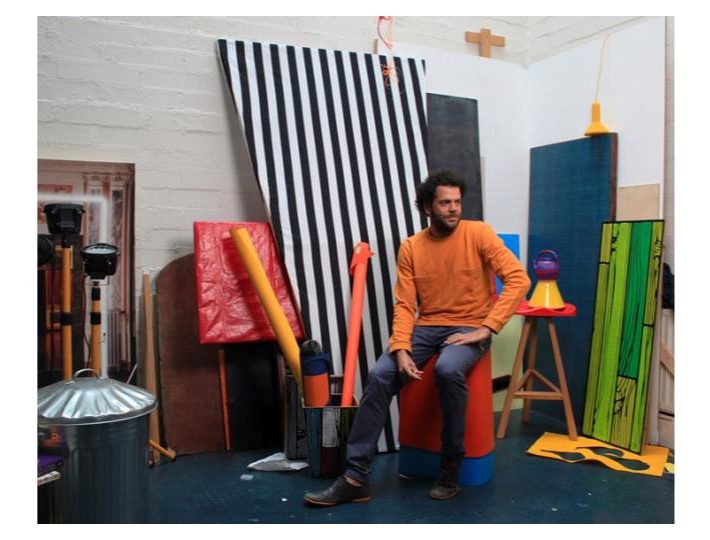
Vitturi’s latest solo exhibitions have taken place at FOAM Museum in Amsterdam, The Photographers’ Gallery in London, at Contact Photography Festival in Toronto, and at the CNA in Luxembourg. Vitturi also participated to group exhibitions in Rome, at Centre Georges Pompidou in Paris, at La Triennale in Milan, at the Shanghai Art Museum and at K11 Art Space in Shanghai, and at BOZAR in Brussels.
Following the presentation of Dalston Anatomy in 2013 as a book, multi-layered installations and performance, Vitturi’s latest photo-book ‘Money Must Be Made’ was published by SPBH Editions in September 2017.
Dalston Anatomy:
Dalston Anatomy is a book project, a multi-layered installation, and a visual celebration of the Ridley Road Market in East London. Lorenzo Vitturi recognised the market as a unique place where ‘different cultures merge together in a celebration of life, diversity and unstoppable energy’ and was inspired to capture this place before it transformed beyond recognition.Residing in the area for over seven years, Vitturi visited the market daily and witnessed the local community, economy and the very nature of the market changing around him with striking acceleration. From this complicated process of transformation stems Vitturi’s compulsion to collect and picture the objects found at the market.

The objects were left to rot, manipulated with pigment or deconstructed and then rearranged in compositions and photographed against discarded market materials before and after their collapse. The ephemeral nature of these sculptures mirrors the impermanent nature of the market itself, while the reconstruction and placement of these totem-objects in the exhibition space reflects on constant cycles of production, destruction and recreation.
The Jersey War tunnels, Also known as the German underground hospital is a tunnel complex located within the hills of St Peters Valley, Jersey. Known to the Germans as Hohlgangsalase 8, The purpose of the tunnels was as a Military hospital, Ordnance and ammunition storage as well as an air raid shelter. The word Hohlgangalase translates to Cave passage installations and HO8 was part of a wide network of tunnels across the Island, With the only complete tunnel being HO5, Loacted in St Aubins and now used to store the Le Petit Train and home to the Jersey indoor shooting club.
HO8 was constructed by organisation Todt originally as a large scale air raid shelter which would link up to other tunnel systems in the area such as HO2 and create a vast underground fortress to be used by the Germans in the event of allied invasion. However, later in the war, HO8 was converted into a hospital and it had fully functioning electricity, heating and running water. The facility has over 1km worth of tunnels with various rooms and sections such as barracks, Gas proof doors and ventilation systems as well as a fully functioning operating theater.
The tunnel was constructed by forced laborers. These were typically Russian and Ukrainian prisoners of war whom were housed in work camps in the island. Conditions among these prisoners were so poor that many died of malnutrition, exhaustion and disease. Many workers in the tunnels were also crushed to death during the creation of the tunnels by rockfalls or beaten to death by soldiers of Organization Todt. Many workers died in the tunnels during their construction.
After the Liberation of the Channel islands, Many of the HO tunnel systems were used for the storage of German equipment such as guns, tanks and barbed wire by the British forces sent over to the island to help clean up the traces of the War. During the Scrap metal drive of the 1950s, The vast majority of Tunnels were completely cleared and many sealed off. In 1962, Two schoolboys were exploring HO2 looking for souvenirs. They sadly died due to high levels of Carbon Monoxide deep inside the tunnels
in 1946 HO8 was opened to the public and owned by the states of Jersey, However a lawsuit soon followed from the owner of the land above and the lawsuit was successful and ownership was returned to the landowner, Who converted it into a museum with many genuine artifacts and features from the war and the Museum remains open to this day
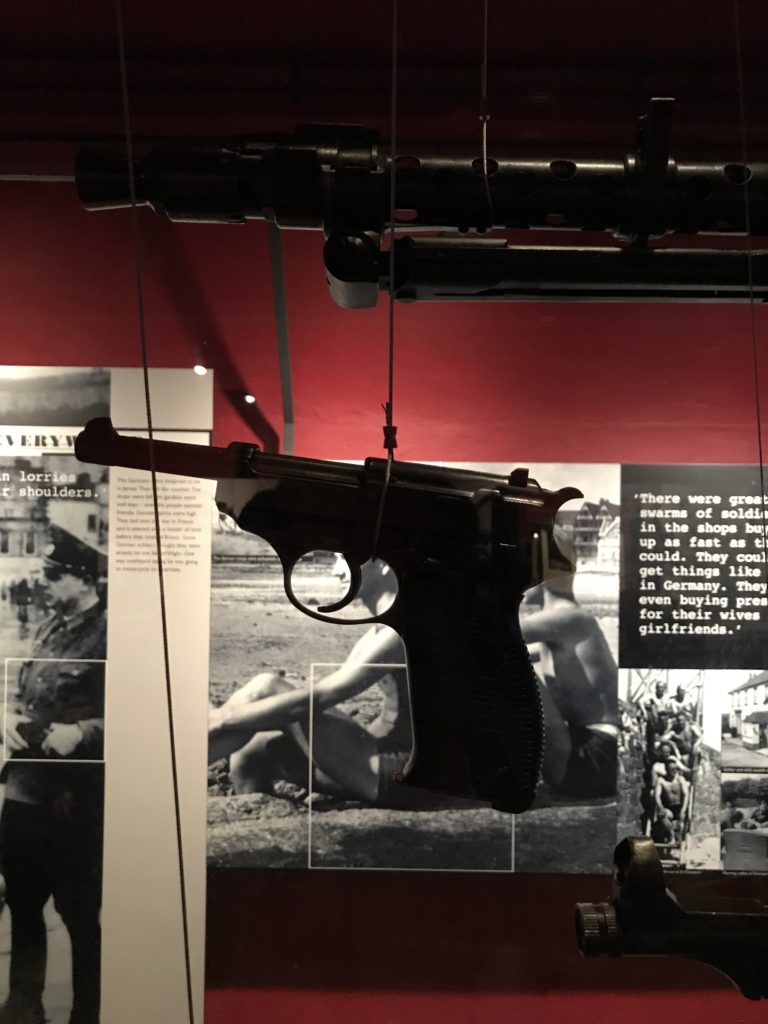
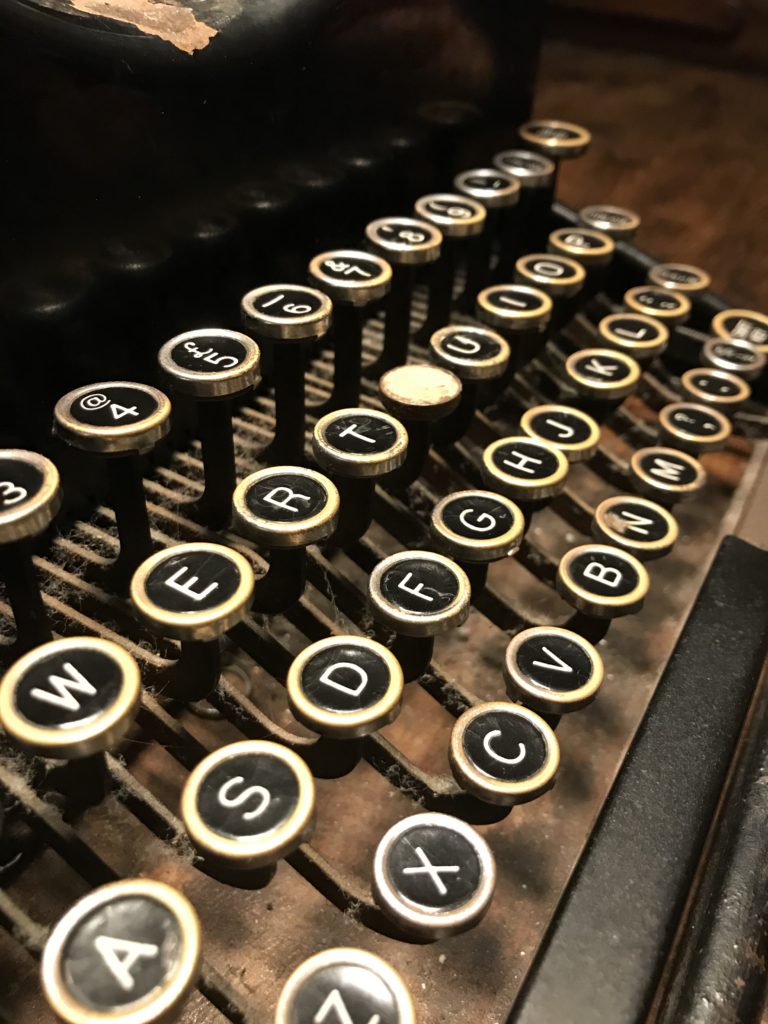
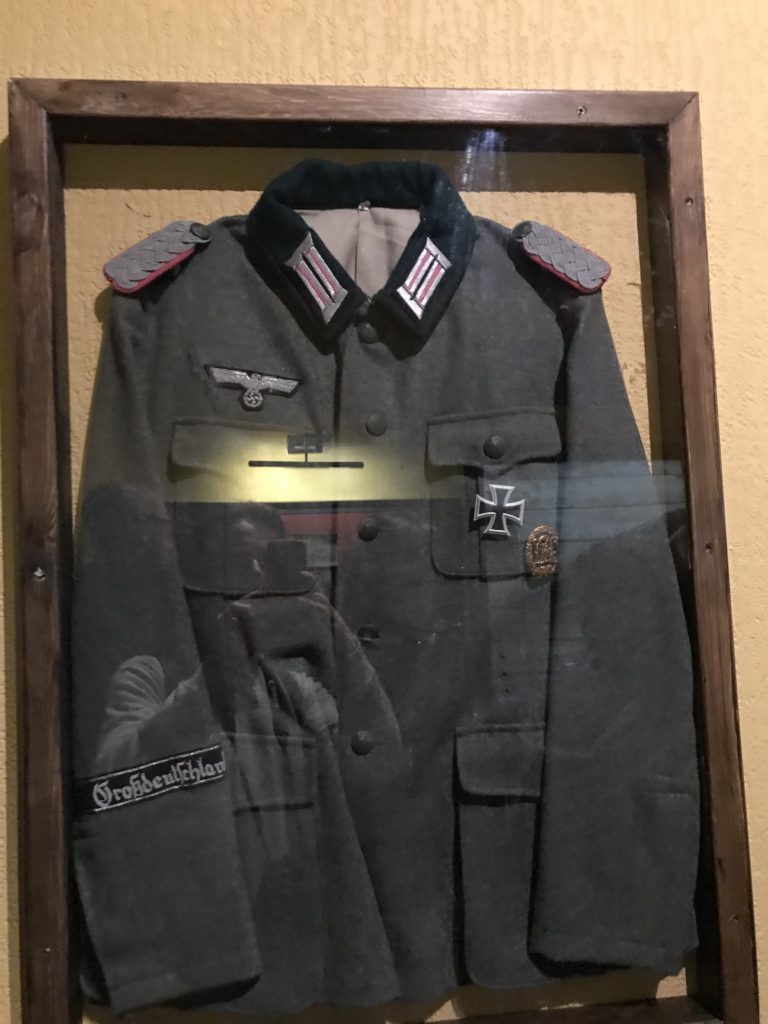
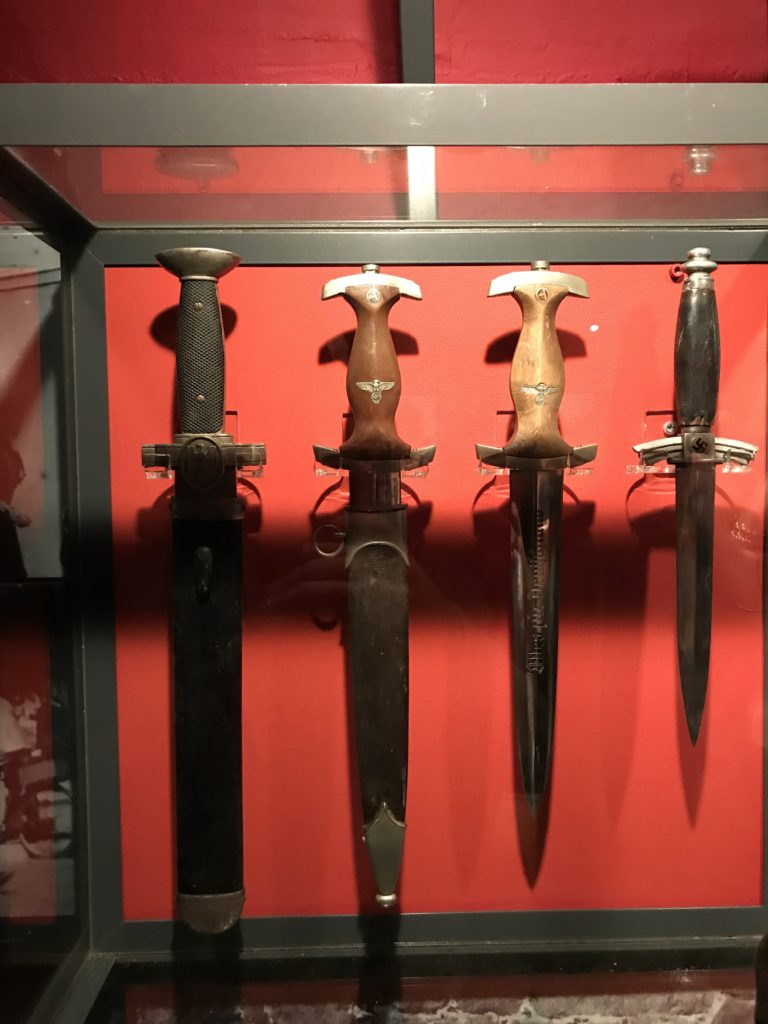
Planning:
In preparation for this photo shoot I looked back at Sian Davey’s candid photography, in order to reflect on the techniques she used, so that I can implement her approach into my work. I wanted half to be highly staged, more like an environmental form, family portrait, and half naturalistic in order to showcase a true representation of my family, following more of a candid form of documentation photography. My camera setting where kept similar to the detail shot photo shoot, due to the shoots occurring on the same day. used the AV setting, allowing me to focus on the aperture and depth of field. On the day these photographs were taken, the lighting was dull, but well lit, which meant that I used a low ISO. My f number stayed on 5.6, unless the room itself was much darker. The shutter speed was set on a quick setting and the white balance was set to the day light setting. In order for further control I used manual focus, allowing me to control the depth of field and the overall composition.
Edits:
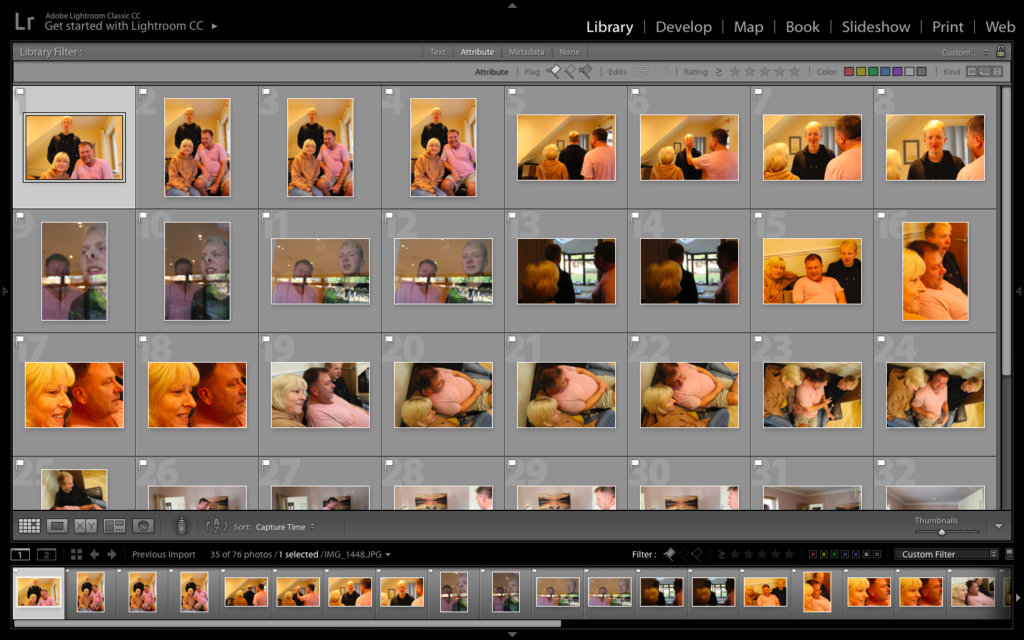
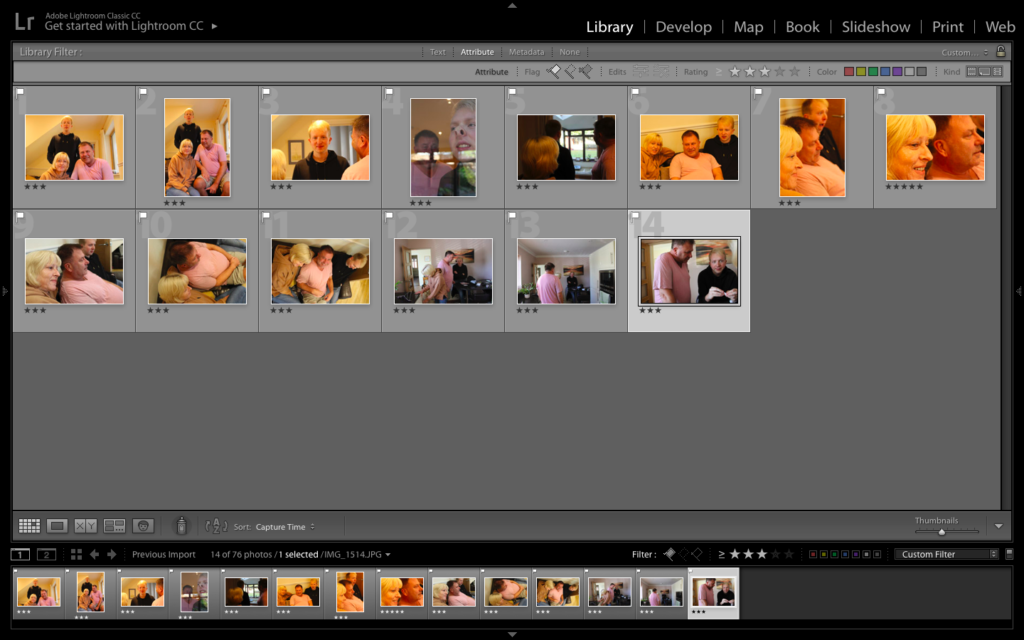
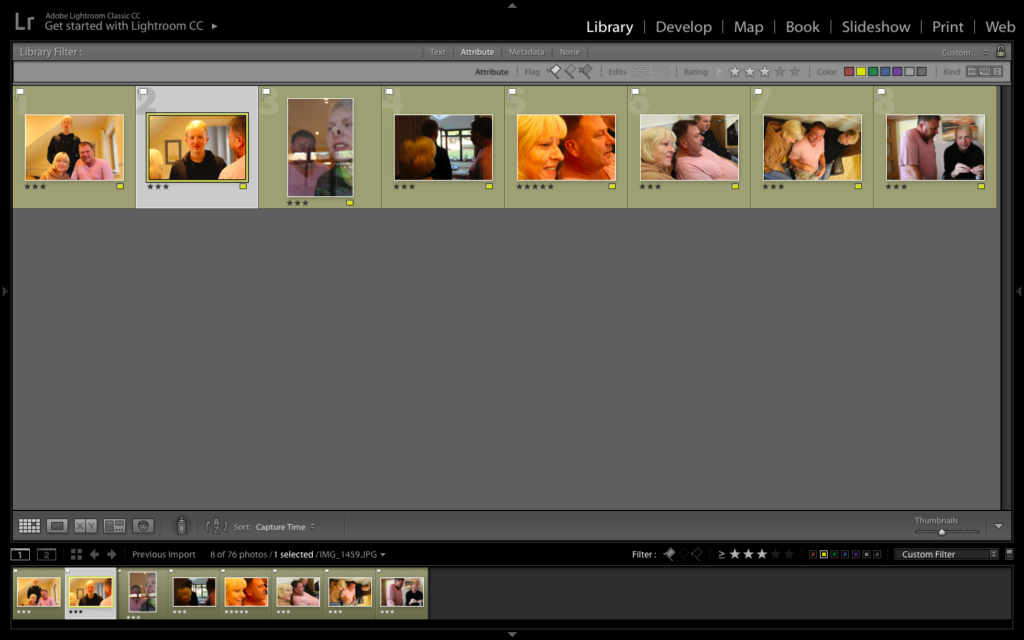
Colour:
For my colour edits, I wanted the outcomes to be kept as naturalistic as possible, so I ensure that the detail and structure was not over the top, creating soft outcomes, focusing on the conceptual reasoning, family love, to be presented within my imagery. I explored with adjusting the white and blacks and shadows in order to create outcomes which still presented tonal contrast, allowing the colours and environment and subjects to be the focus of the composition. I am pleased with the way in which these outcomes have turned out, due to me keeping the editing simple, to capture the naturalism of the photographs.
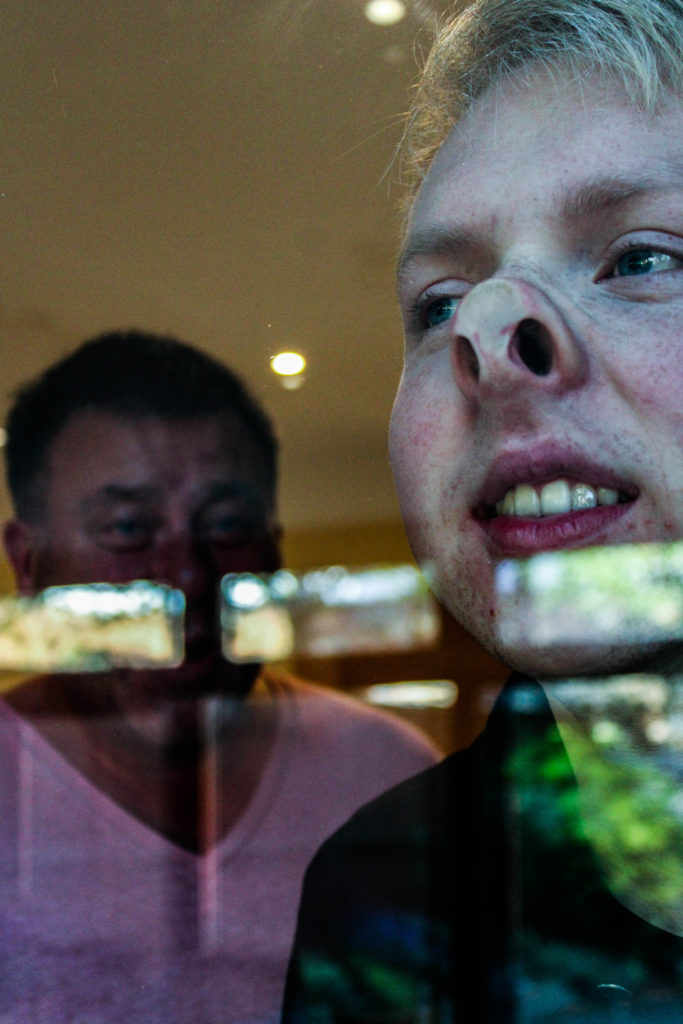
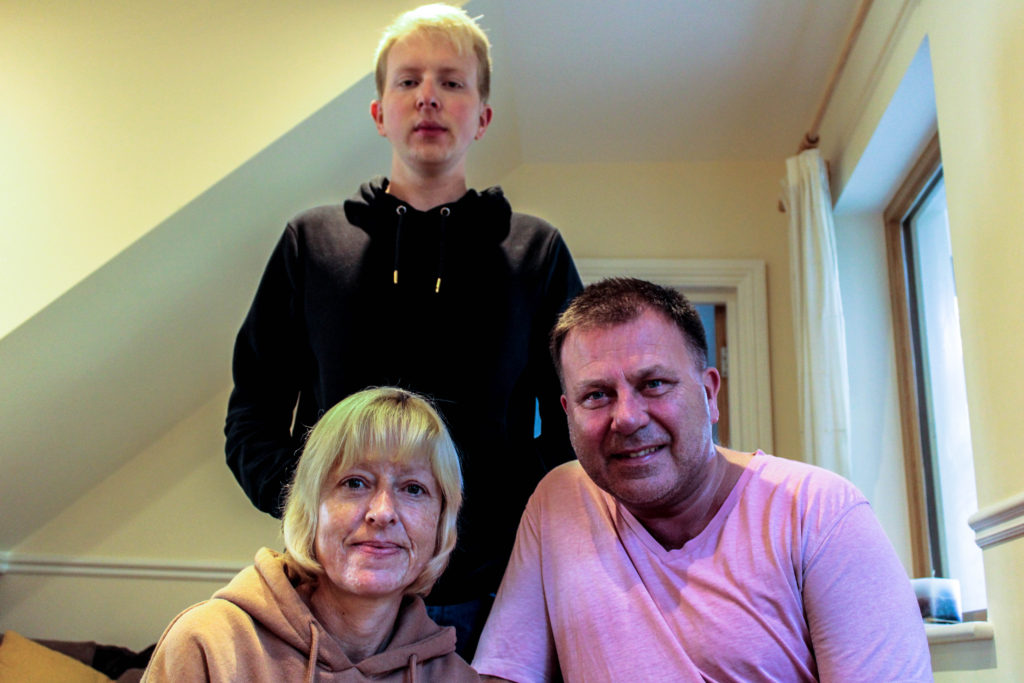

Black and White:
For my black and white outcome, I explored with an image which uses a birds eye view angle. The tonal contrast and new angle allows the conceptual meaning to be presented in a new way, which showcases this further exploration as successful. The photograph follows a candid style of photography, and presents my three subjects, with one looking at the camera, implementing an environmental stylistic feature to my work. The composition uses the rule of thirds, allowing viewers eyes to be guided around the frame. The formal element of space plays an active role with the outcome. In the frame there seems to be a lack of empty space, thus my models are in close proxemics to one another, which emphasise the conceptual representation of family love and bonding within the work. The background, is kept simplistic with not much going on showcasing my families naturalistic environment.
Technically, the photograph uses a small aperture, due to the the whole frame being in focus. The ISO used is low which is shown through there being no noise being created. This also allows us to understand that natural lighting produced by the daylight was used to capture this, and informs us that the white balance has colour accuracy and that it presents a sense of warmth, adding to the overall pleasant mood to the piece. In addition, the shutter speed is quick, due to no interned blur being presented within the outcome.
In order to achieve all of this, I kept the editing simplistic. I turned the photograph black and white and focused mainly on adjusting the black, white, shadows and contrast sliders in order to create the overall photograph.
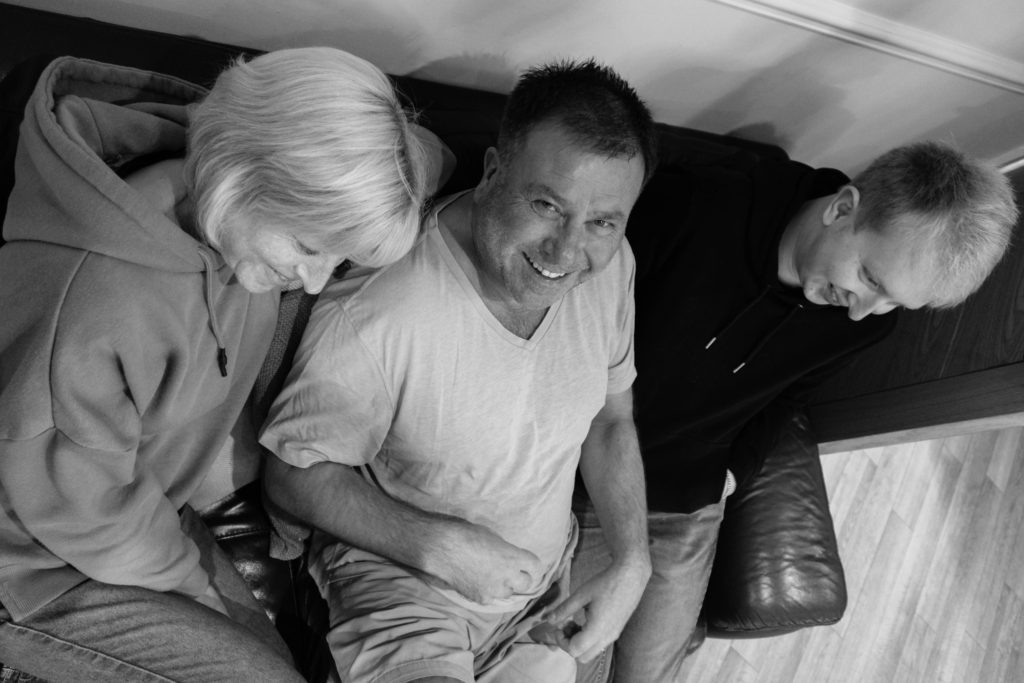
Evaluation:
To evaluate I believe I have produced strong photographs which clearly showcases my understanding of ‘Establishing a shot’ and the ability to use candid photography in order to produce naturalistic outcomes, which explores a narrative within my work. I have reinforced my ability to have control over manual settings and shown my competence of using Lightroom in order to edit my photographs. Although I have produced strong imagery, I do not believe it is as successful as the detail shot photo shoot. However, the imagery still produced has an clear overall aesthetic and shows exploration into the home sweet home briefing.
Planning:
When going about this photoshoot I kept in mind the technique the Martin Parr used when he captured detailed/macro photography, in order to create an effective outcome which can hold a lot of conceptual meaning. On top of this, I also took inspiration from the mood board created on the previous blog post, in order to create new ways and approaches of capturing this style of photography. When capturing this set of photographs I used the AV setting, allowing me to focus on the aperture and depth of field, an important feature for macro style photography. On the day these photographs were taken, the lighting was dull, but well lit, which meant that I used a low ISO. My f number stayed on 5.6, unless the room itself was much darker. The shutter speed was set on a quick setting and the white balance was set to the day light setting. In order for further control I used manual focus, allowing me to control the depth of field and the overall composition.
Edits:
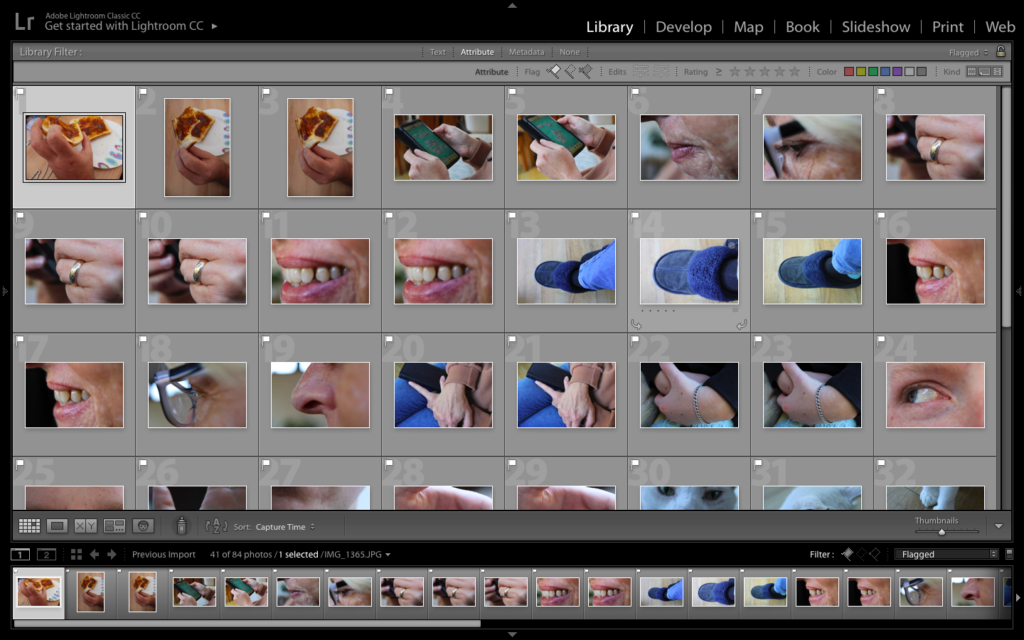
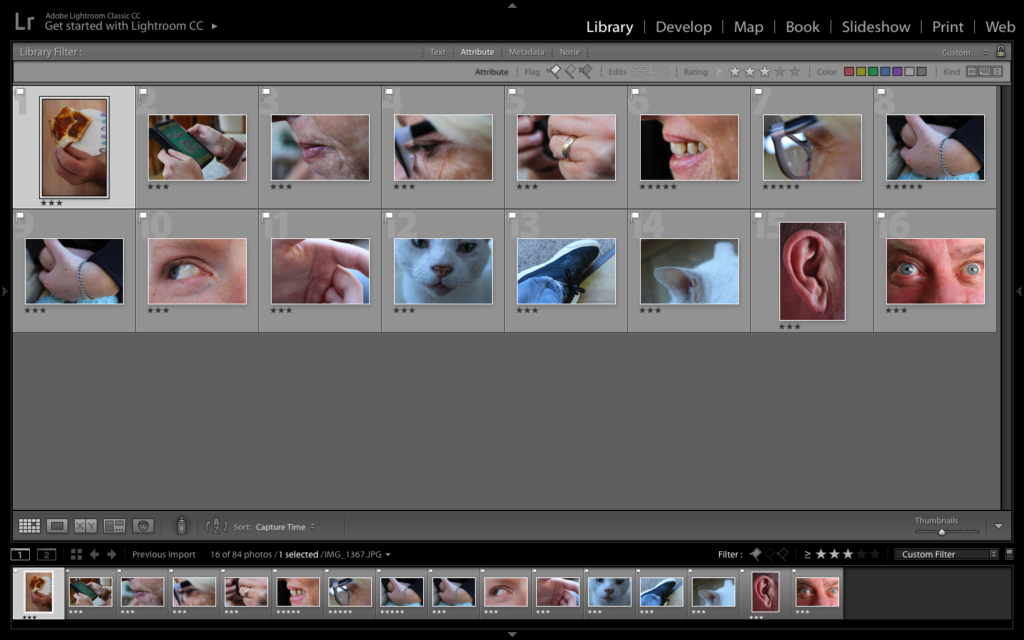

Colour Edits:
For my colour edits I tried to explore with making the colours vibrant and over the top, to create a similar outcome as Parr. In order to do this I increased the contrast, vibrance, white and blacks. Although this worked well, I did not think that it was justifying my work, so I decided to edit them normally, as if it was a normal portrait, in order to allow the detail to clearly be showcased. To do this I subtly moved the sliders in order to correct the imagery until I gained my desired effect. I believe my colour outcomes are successful as they clearly showcase the formal elements of colour, texture, space and shape, which enables the macro photographs to meet the briefing and showcase my implementation of Parr’s work within mine.



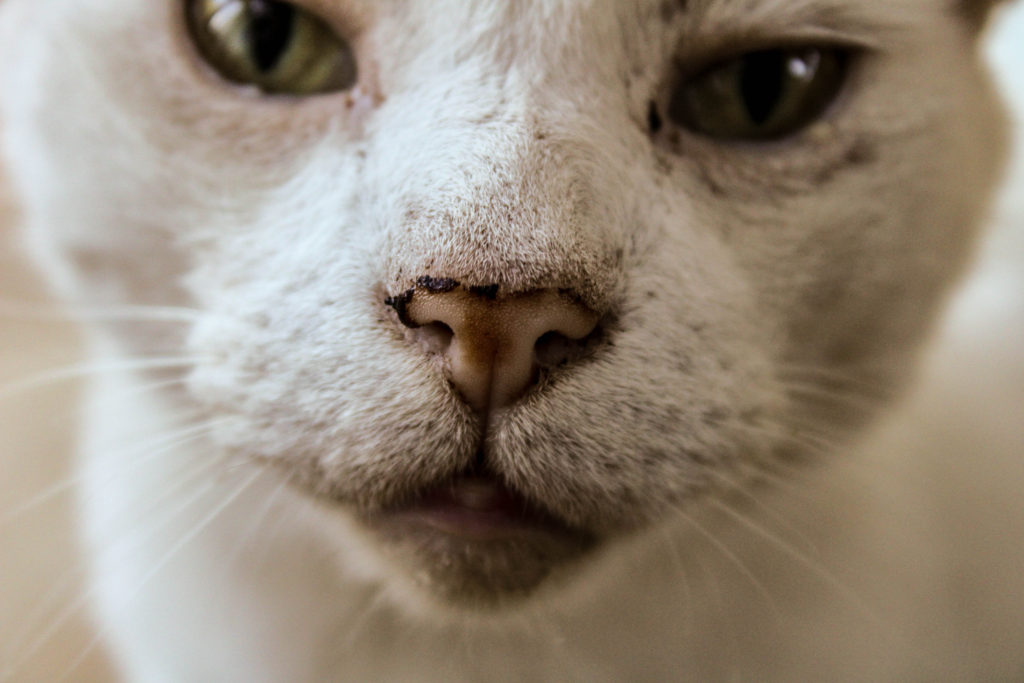
Black and White:
Experimenting in black and white; I was a little skeptical at first as all my inspiration did not use black and white imagery to present the macro photograph. I then decided to go ahead with this idea, because I knew it would show exploration outside of my research. In order to achieve this effect, I set the image to black and white and mainly focused on adjusting the black, white, contrast, structure and shadow sliders in order to create the outcome below. I am happy that I experimented with black and white, as I believe that this is my strongest outcome from the photoshoot, with my reasoning for this being explained in an analysis of my work below.
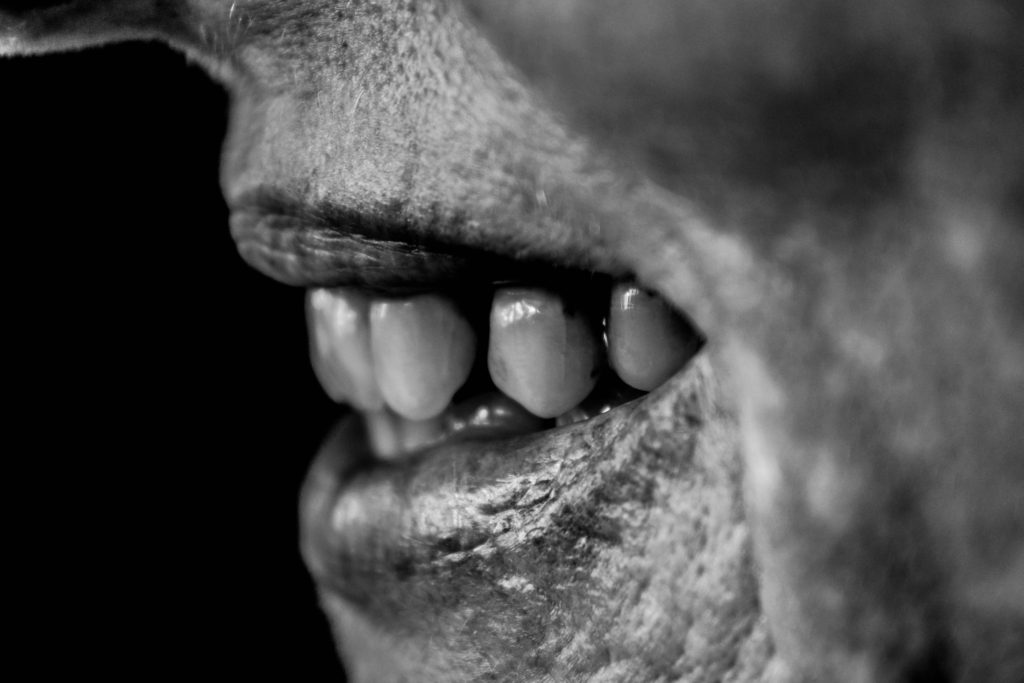
Visually, we are presented with a landscape macro photograph of a models mouth, who is smiling showing her teeth. The frame is 3/4 full, with a sense of space on the left of the frame, presenting the technique of rule of thirds bring utilised in this outcome. The main focus point is the teeth, due to it being the area most in focus, which informs us that a large depth of field has been used when capturing the photograph. The photograph presents the formal elements of space, texture, shape and tone, which is being shown through the detail of the lower half of the models face. The photograph is presented in black and white which allows a clear tonal contrast to be showcased, making the imagery even stronger. The background is black, which enables our attention to be focused on the foreground, the face of the model, allowing the conceptual representation of happiness within a family to be clearly presented.
Technically, the photograph uses a medium aperture, due to the narrow depth of field being utilised in order to allow the focus to be on the mouth and teeth. The ISO used is low which is shown through there being no noise being created. This also allows us to understand that natural lighting produced by the daylight was used to capture this, and informs us that the white balance has colour accuracy and that it presents a sense of warmth, adding to the overall pleasant mood to the piece. In addition, the shutter speed used to capture this macro photograph was quick sue to no intended blur being presented in the overall composition.
Evaluation:
To evaluate this photo shoot, I believe that it was more successful than the previous home sweet home shoot, due to me producing stronger imagery, through more control over my camera settings. I have been able to show my competence with macro photography, as well as showing my ability to use manual focus in order to create depth of field and put different features in focus for effect. I have also shown my ability to take inspiration and implement it into my work, on top of adding my own artist style to show further exploration within my imagery. I believe that my overall outcomes are successful due to high control in my camera settings, and quality editing, making my work have a clear overall aesthetic.

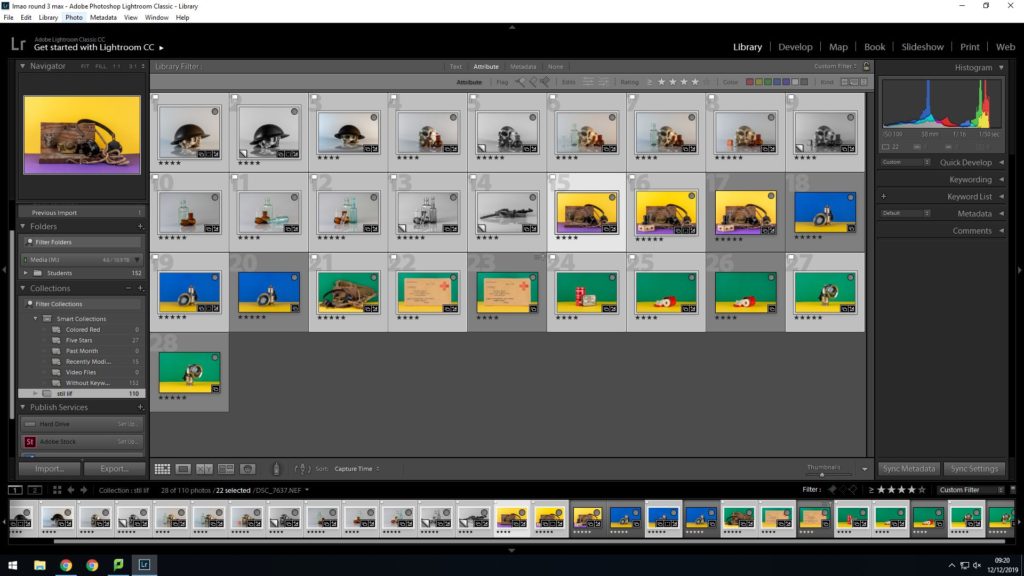
Much of the edits for the first shoot consist of increasing contrast and detail as well as some experimentation with black and white edits.
As for the second shoot and emphasis was put on improving color depth and repairing blemishes in the background.
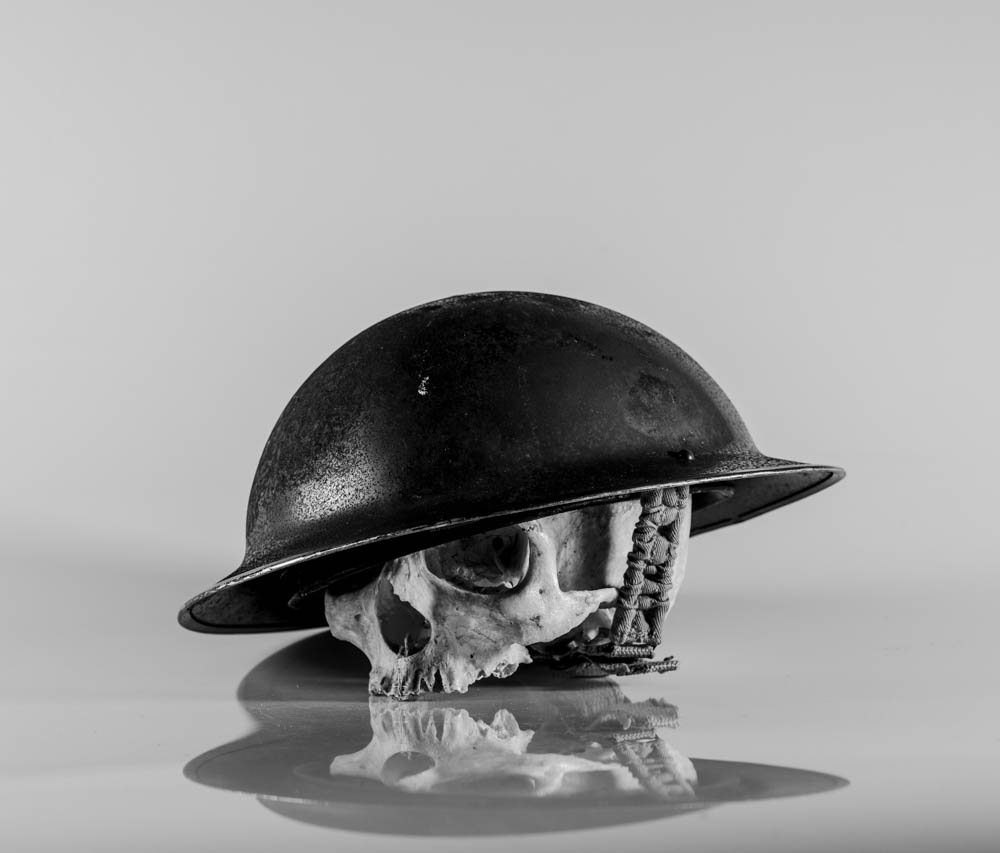
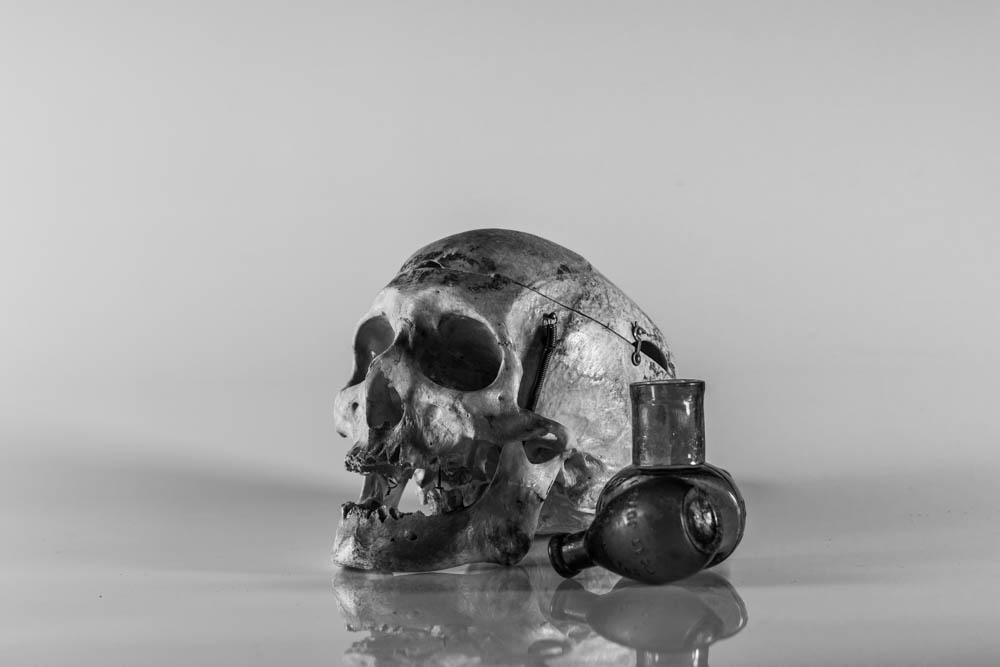
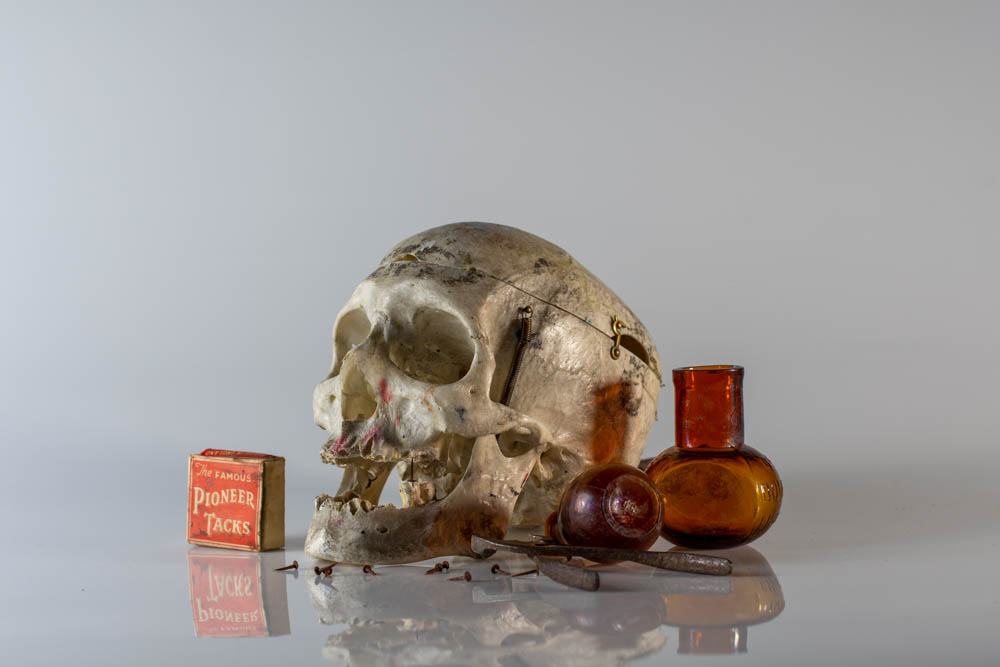
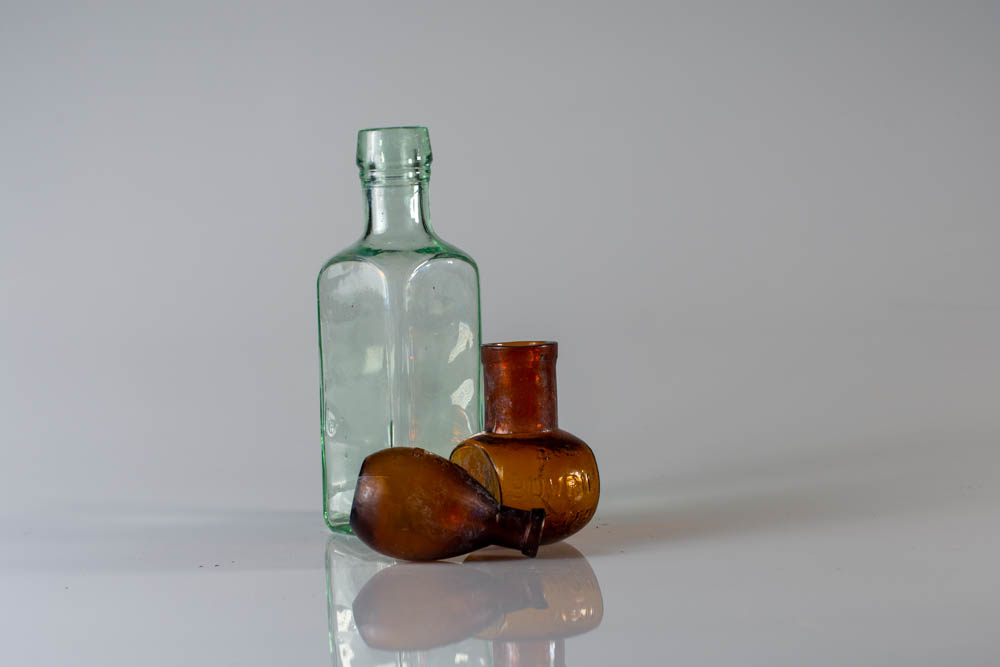
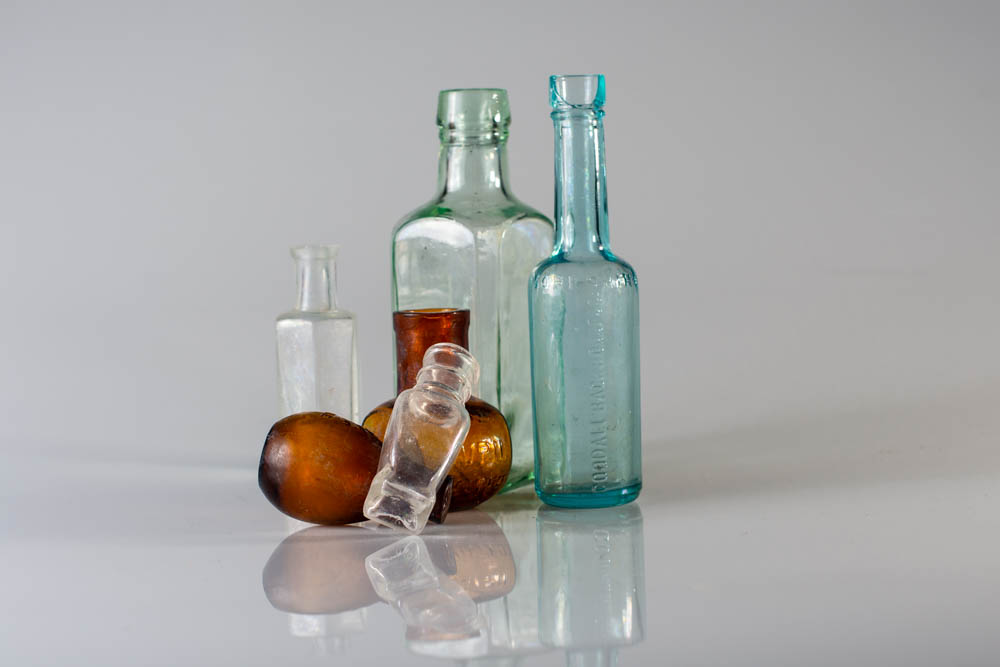
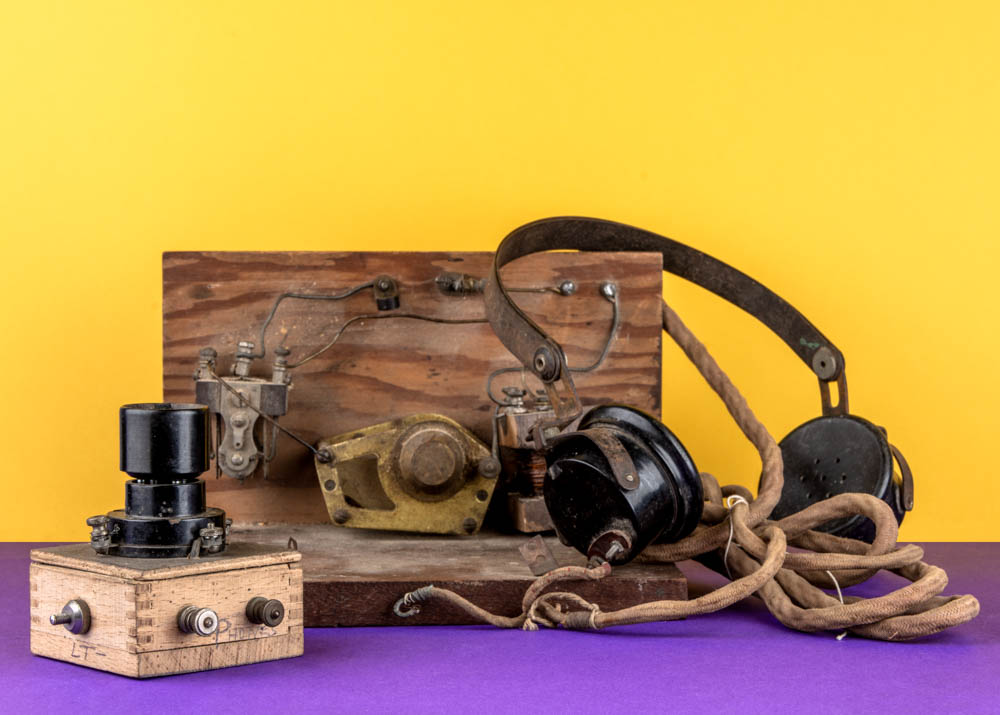

These images have had their background retouched in order to produce a cleaner line between the different colors as well as light retouching to the subject of the images to preserve as much detail as possible. the brightness of each flash-heads to achieve the desired lighting for each composition.